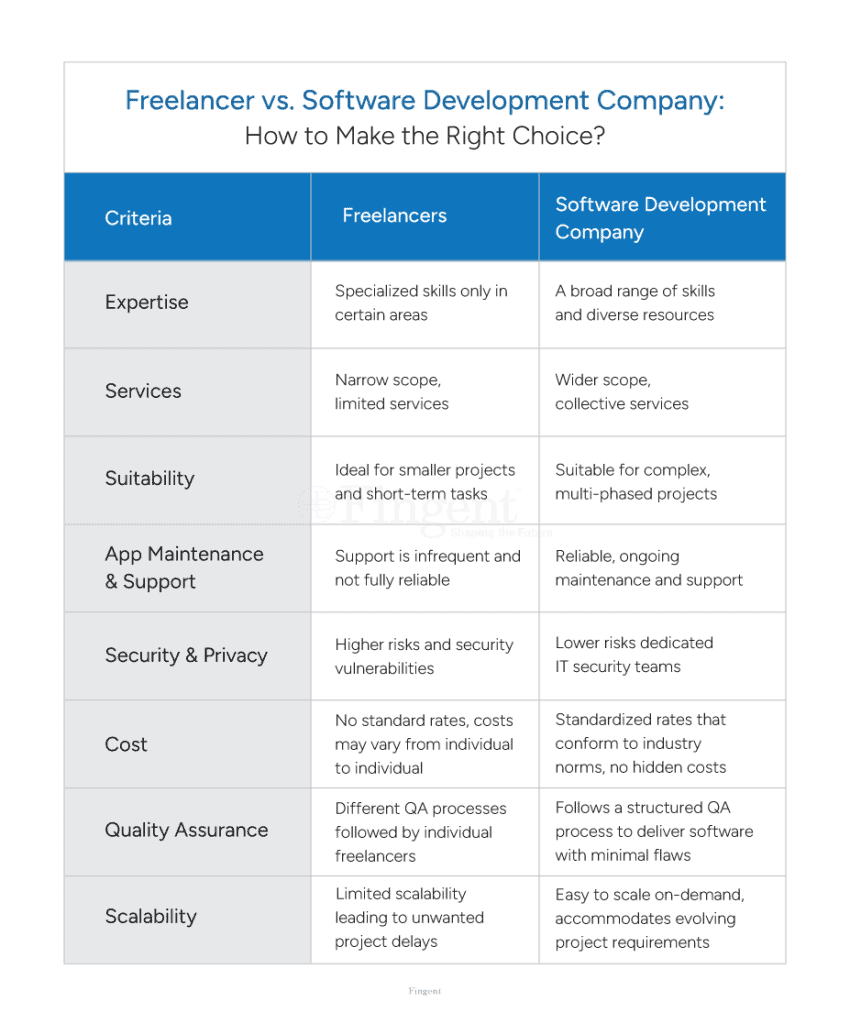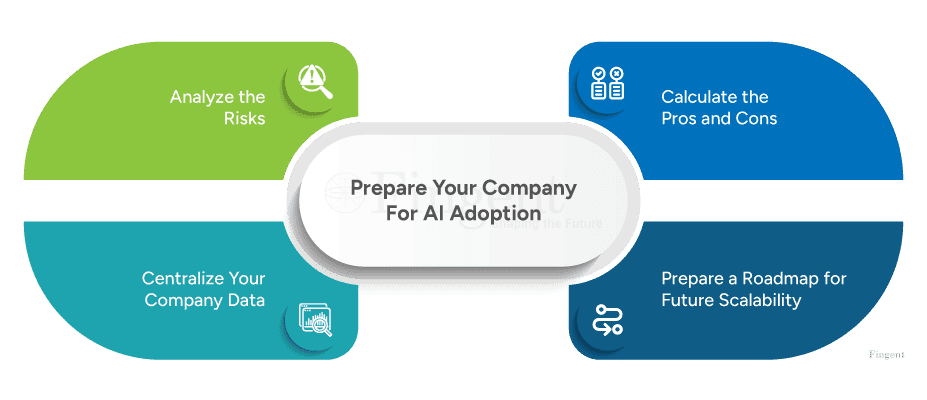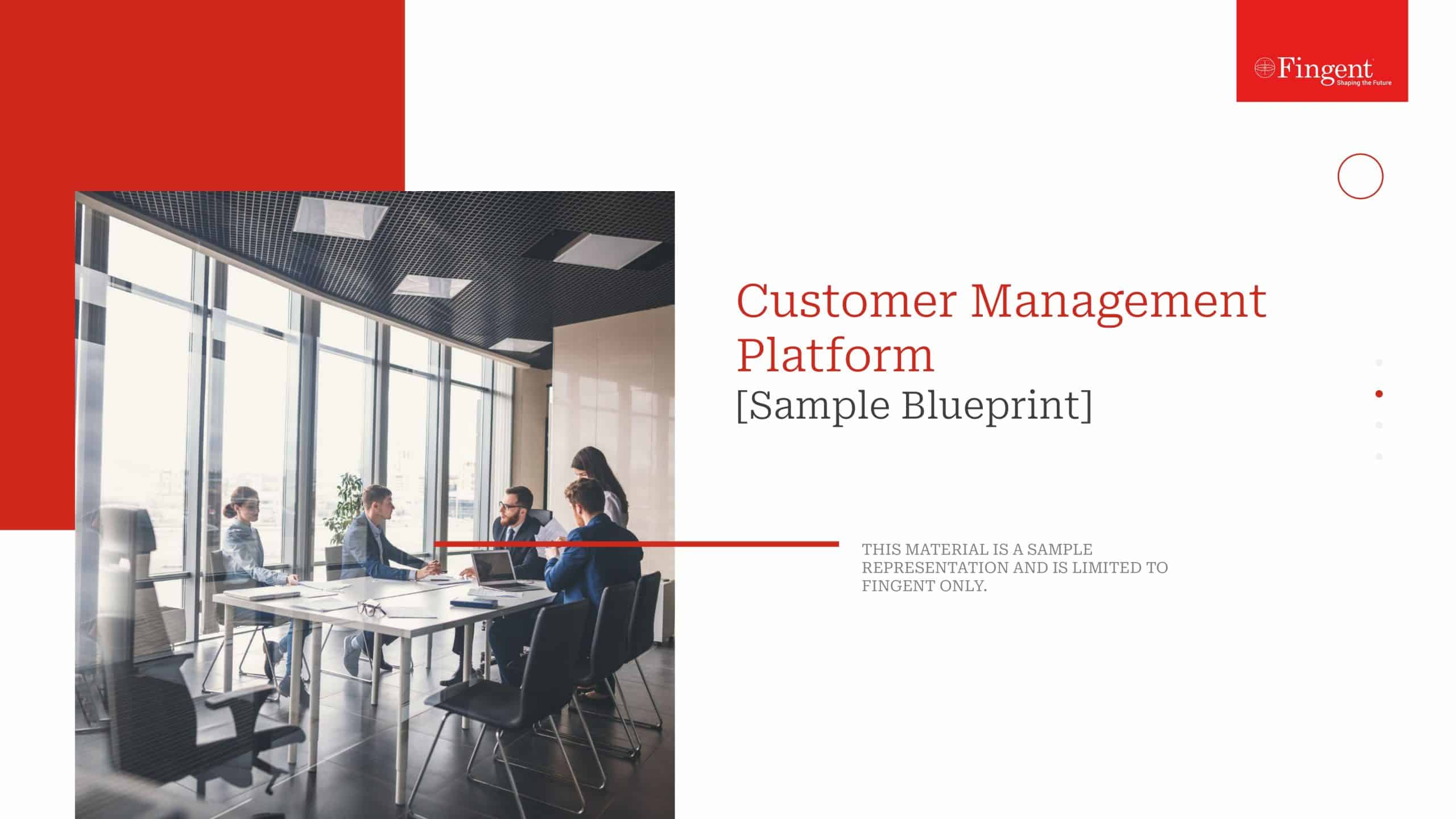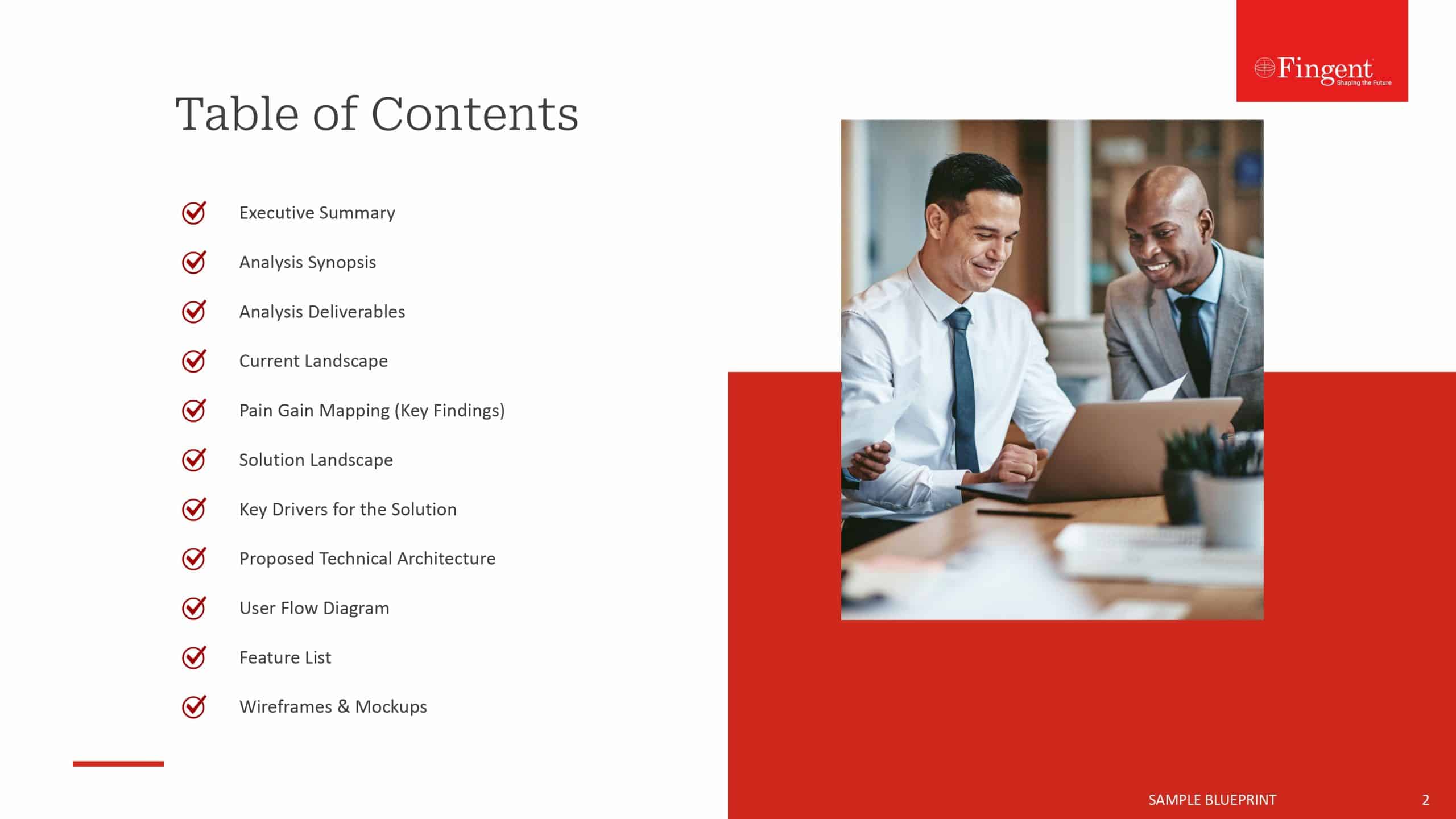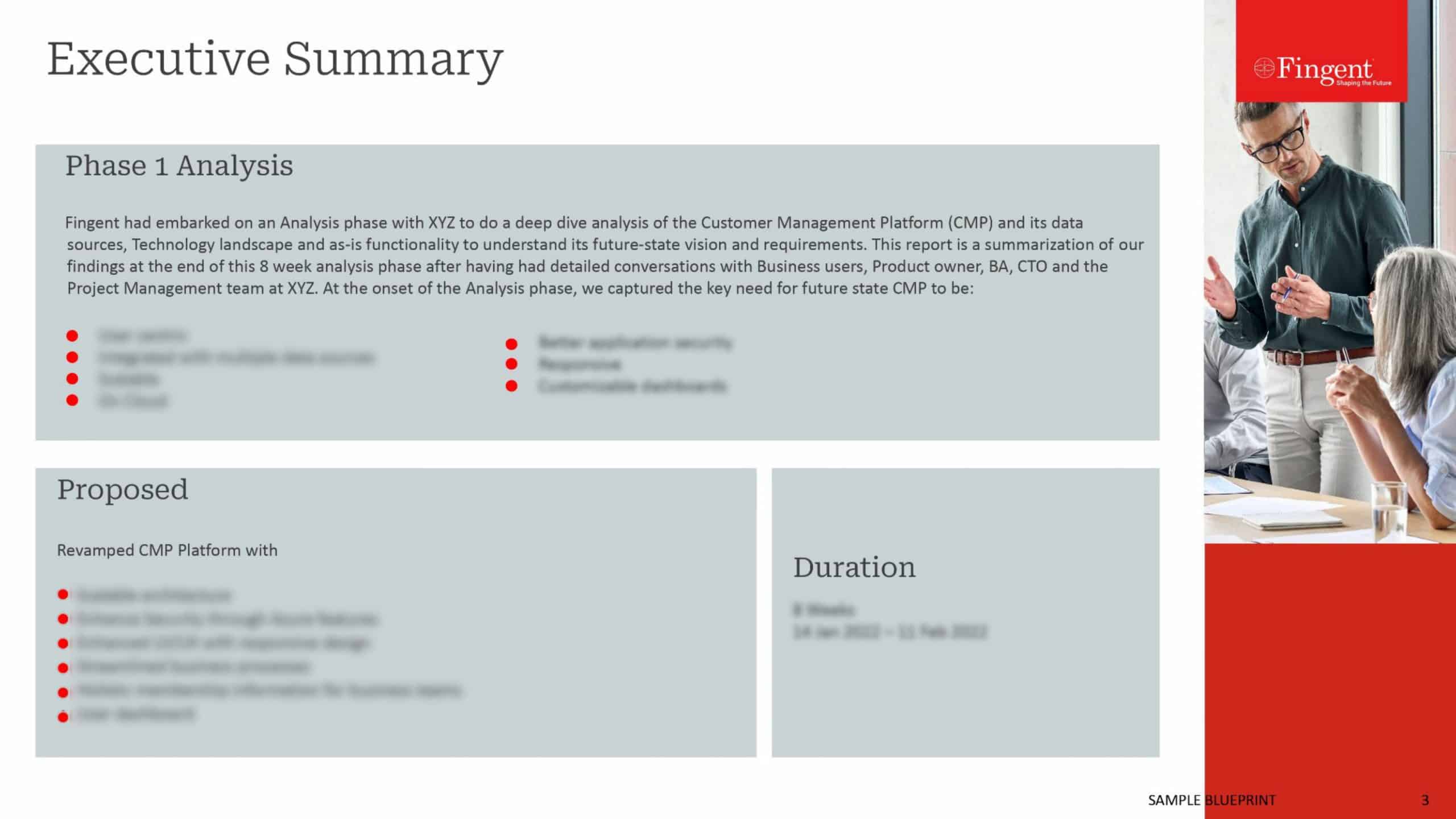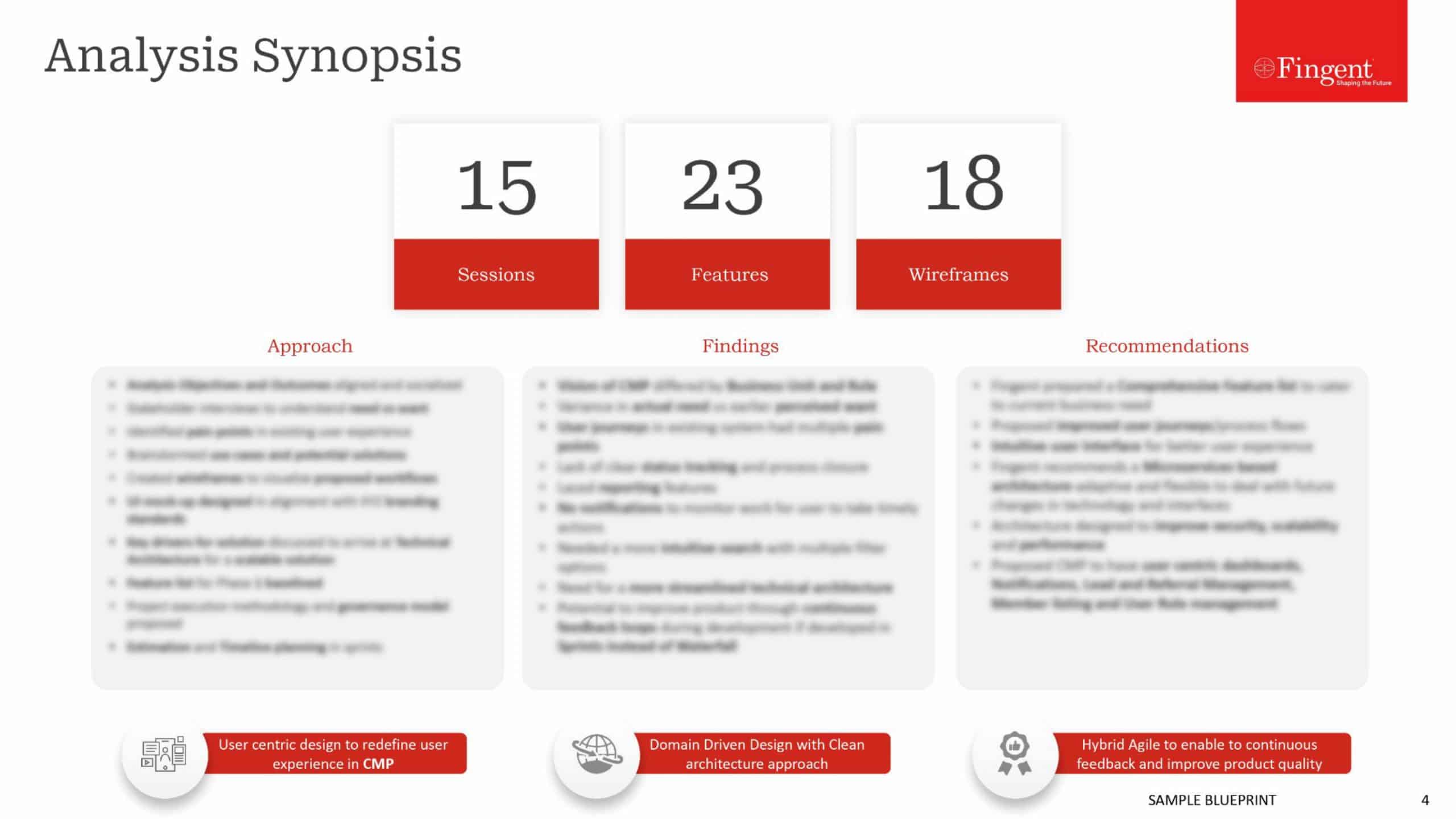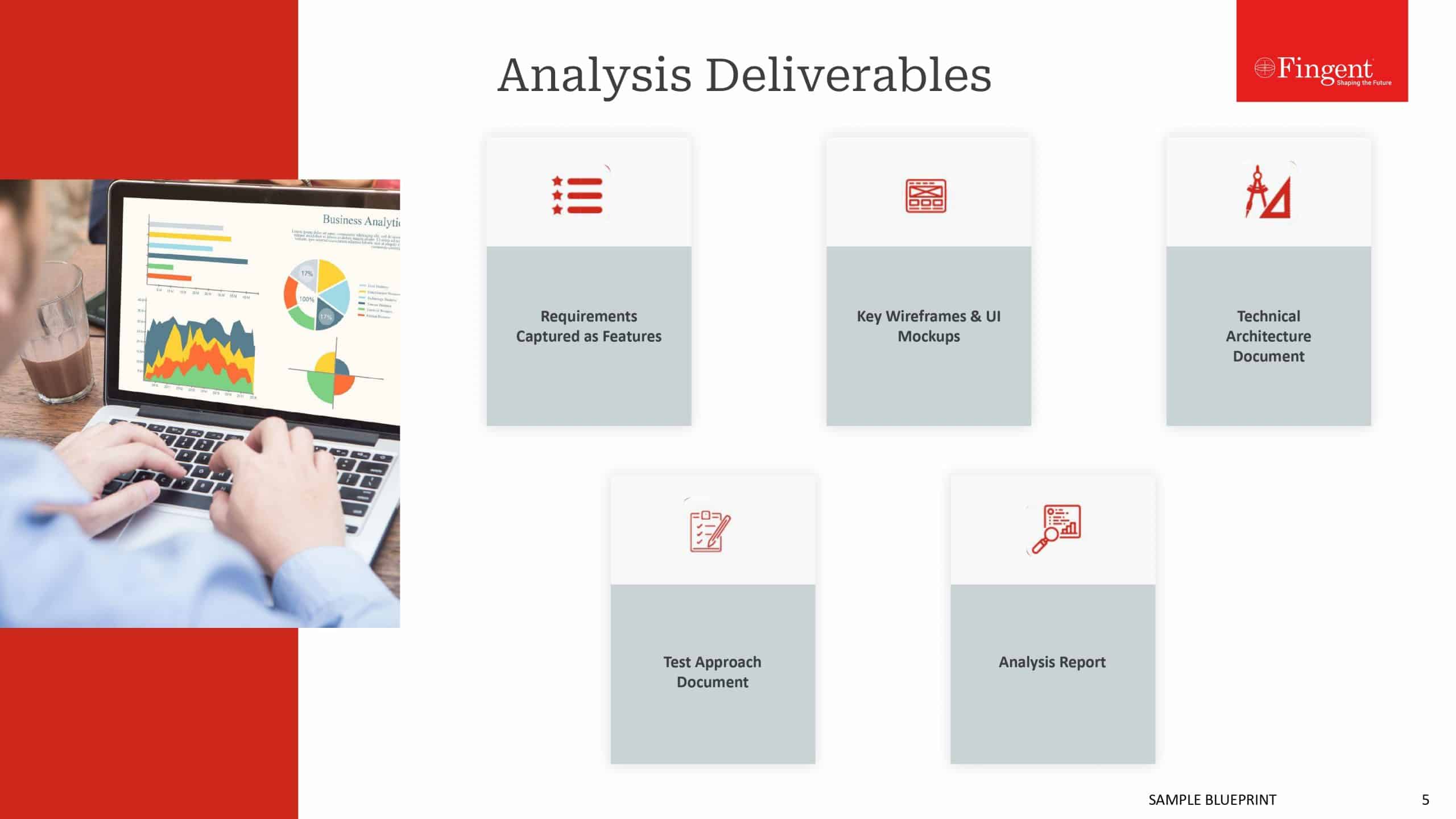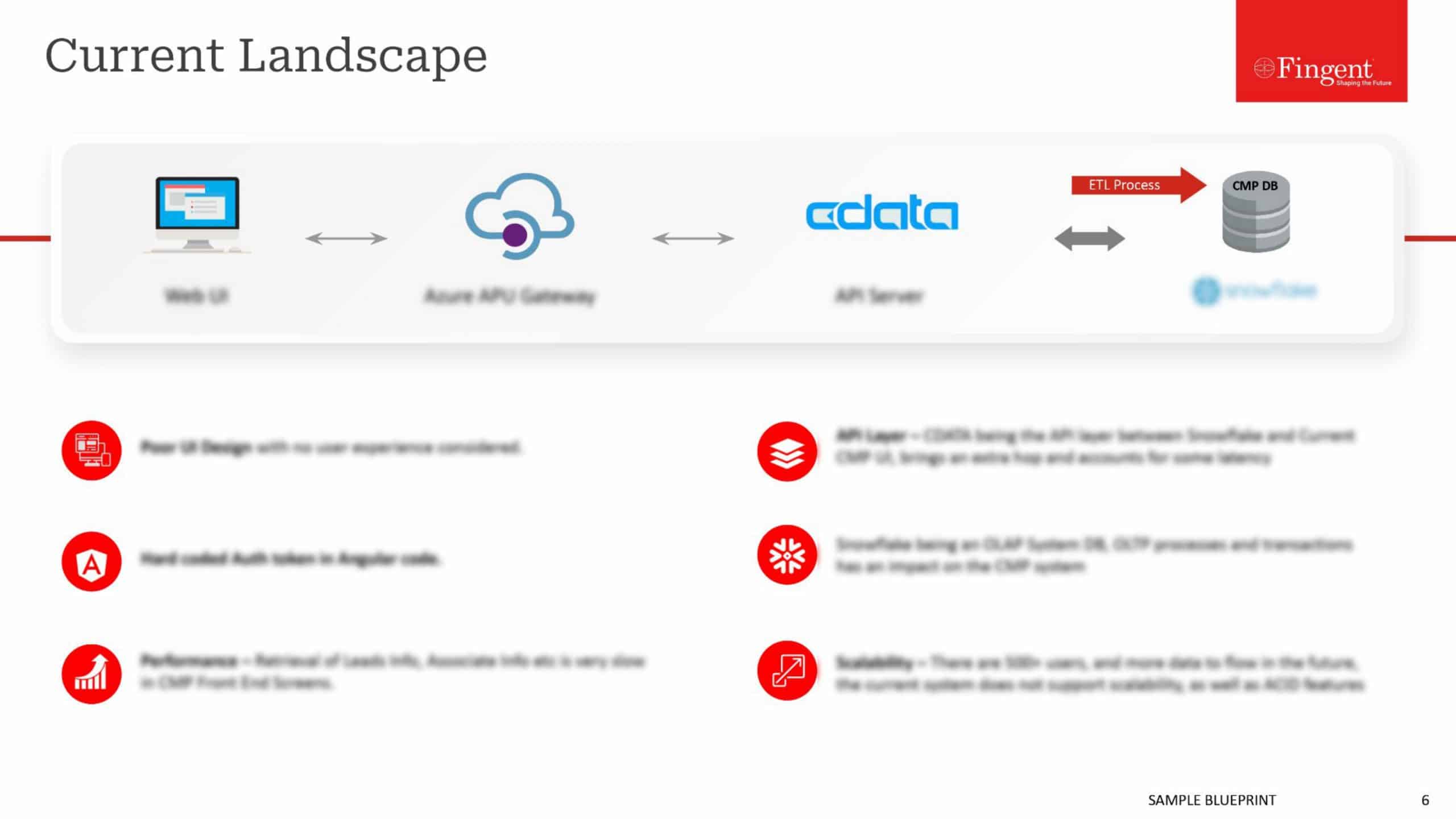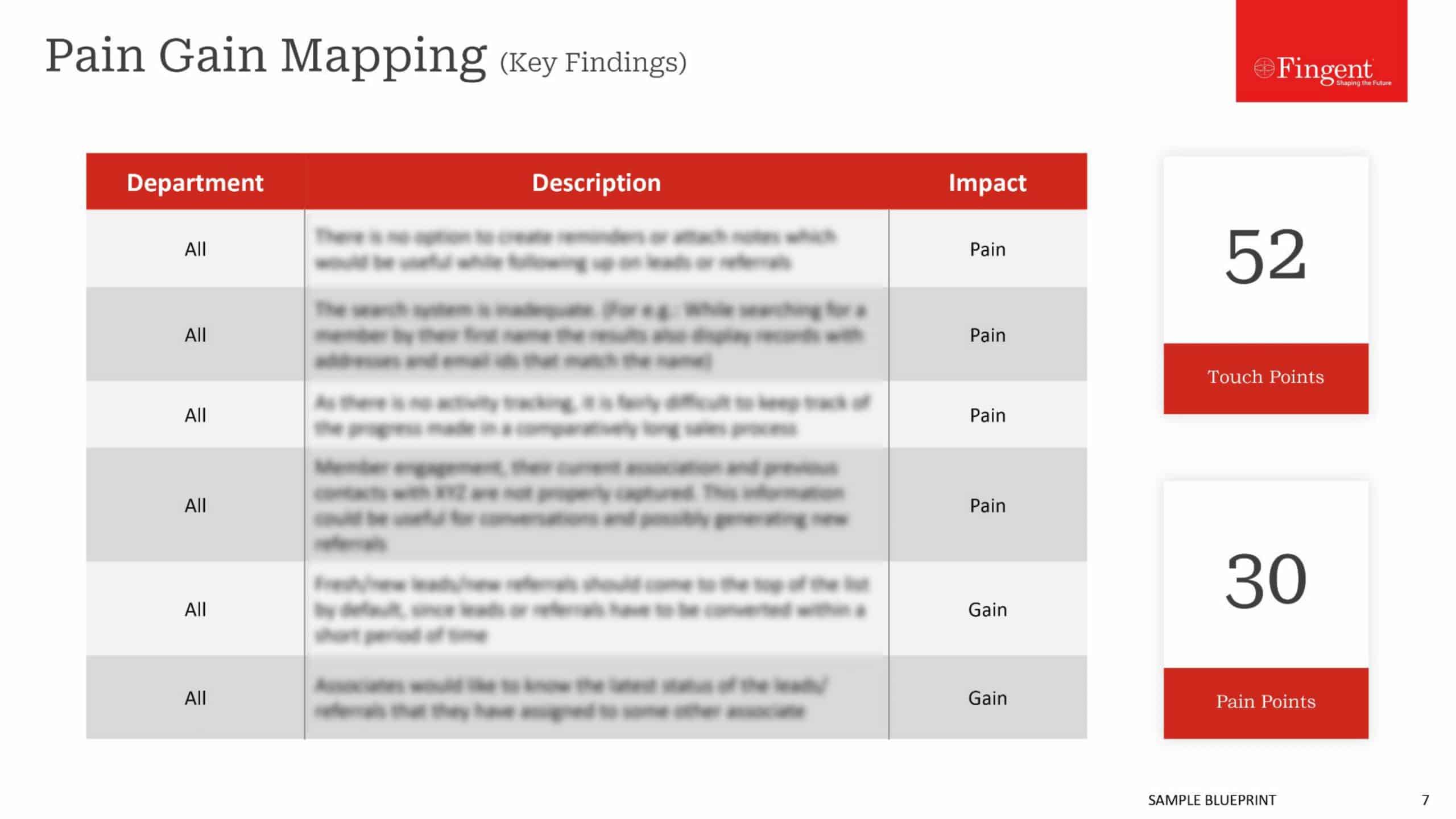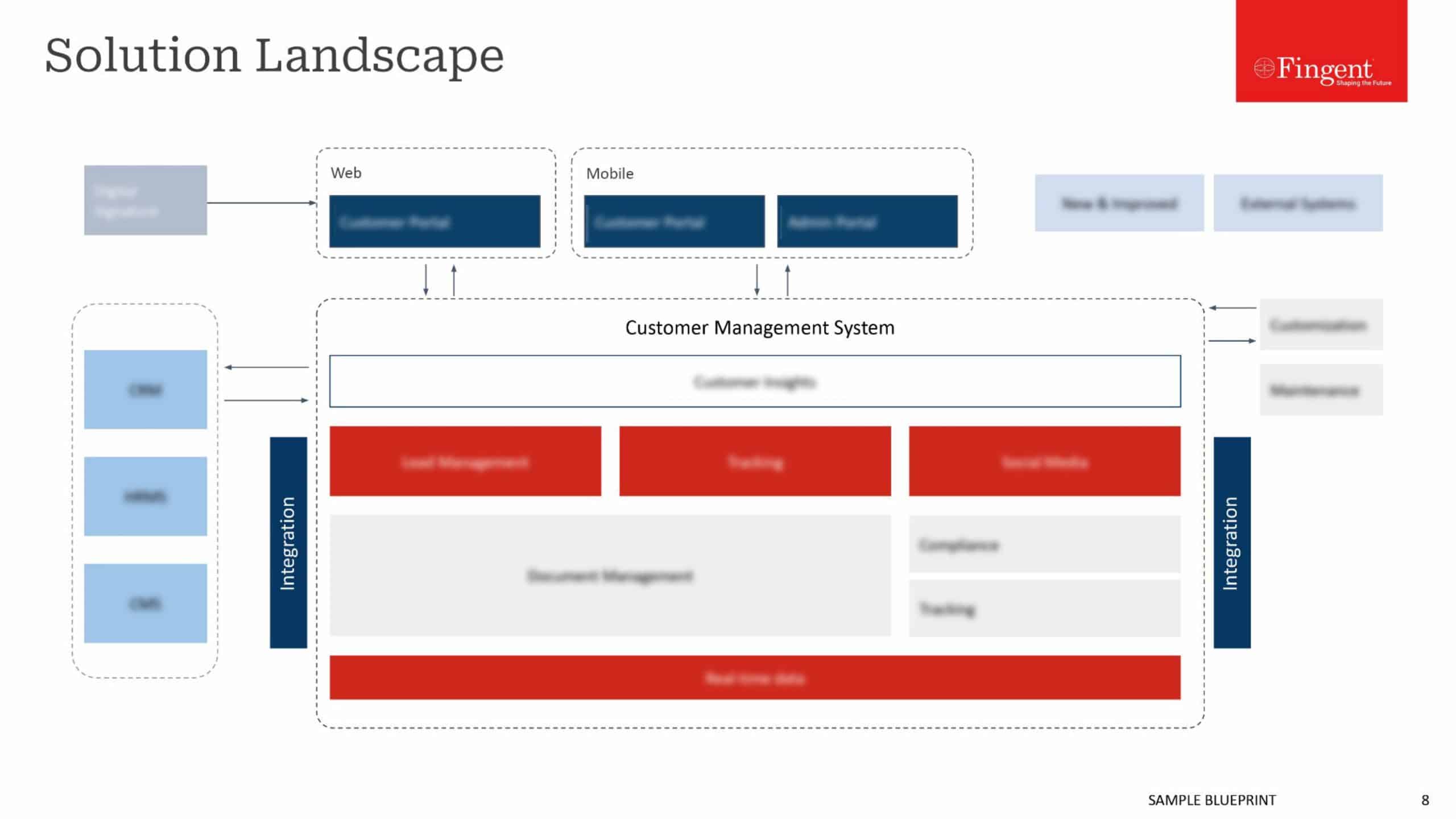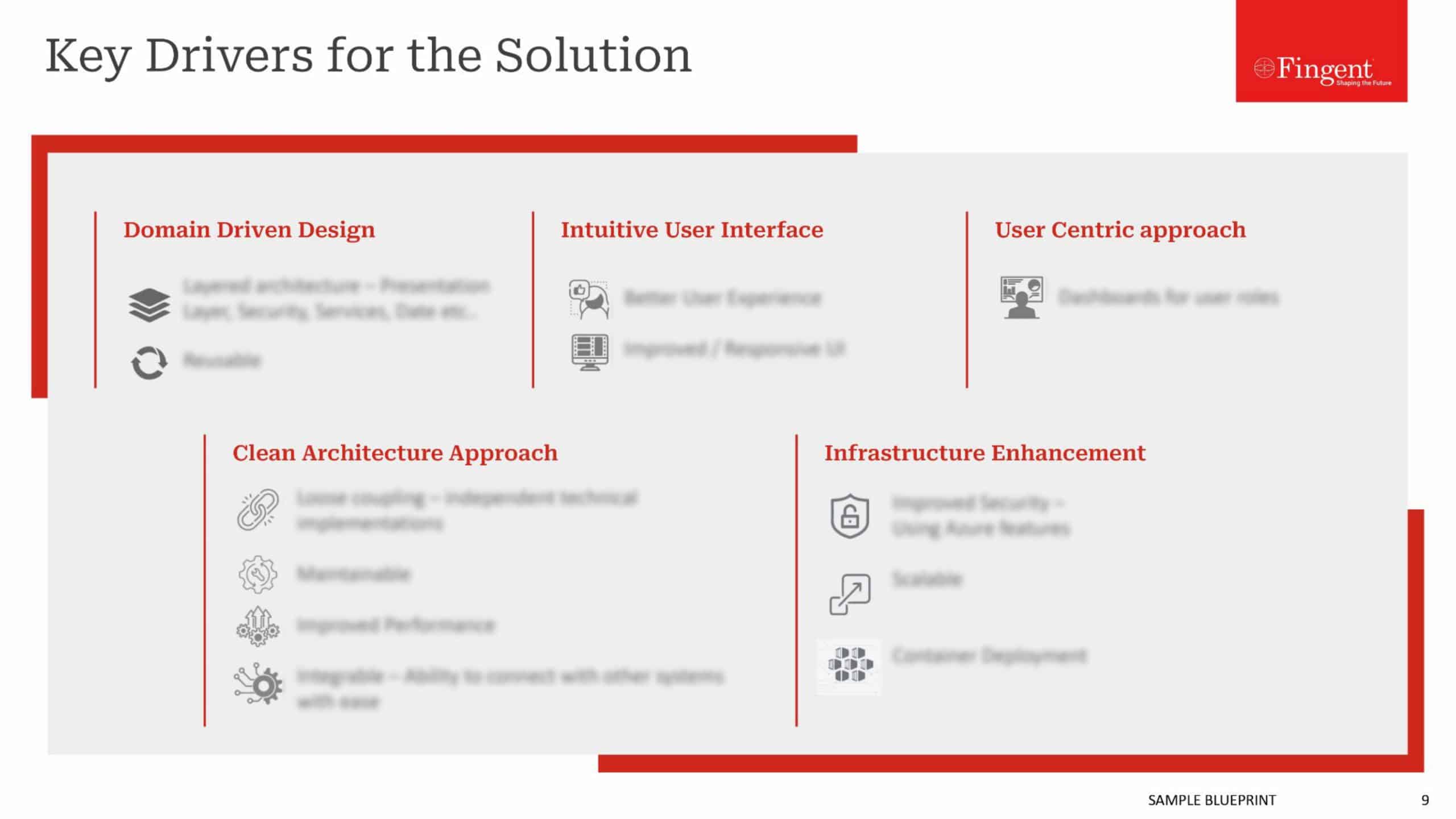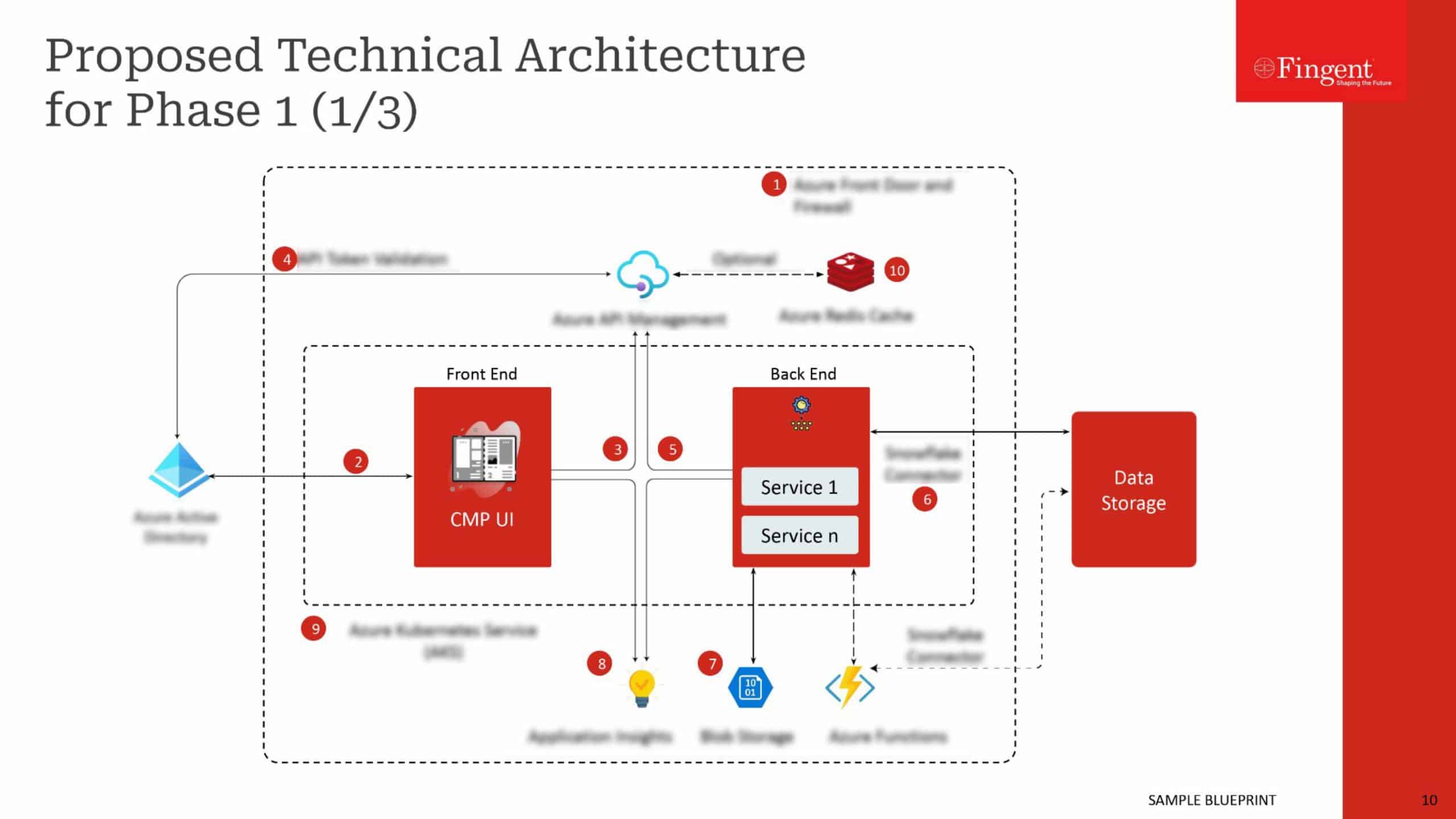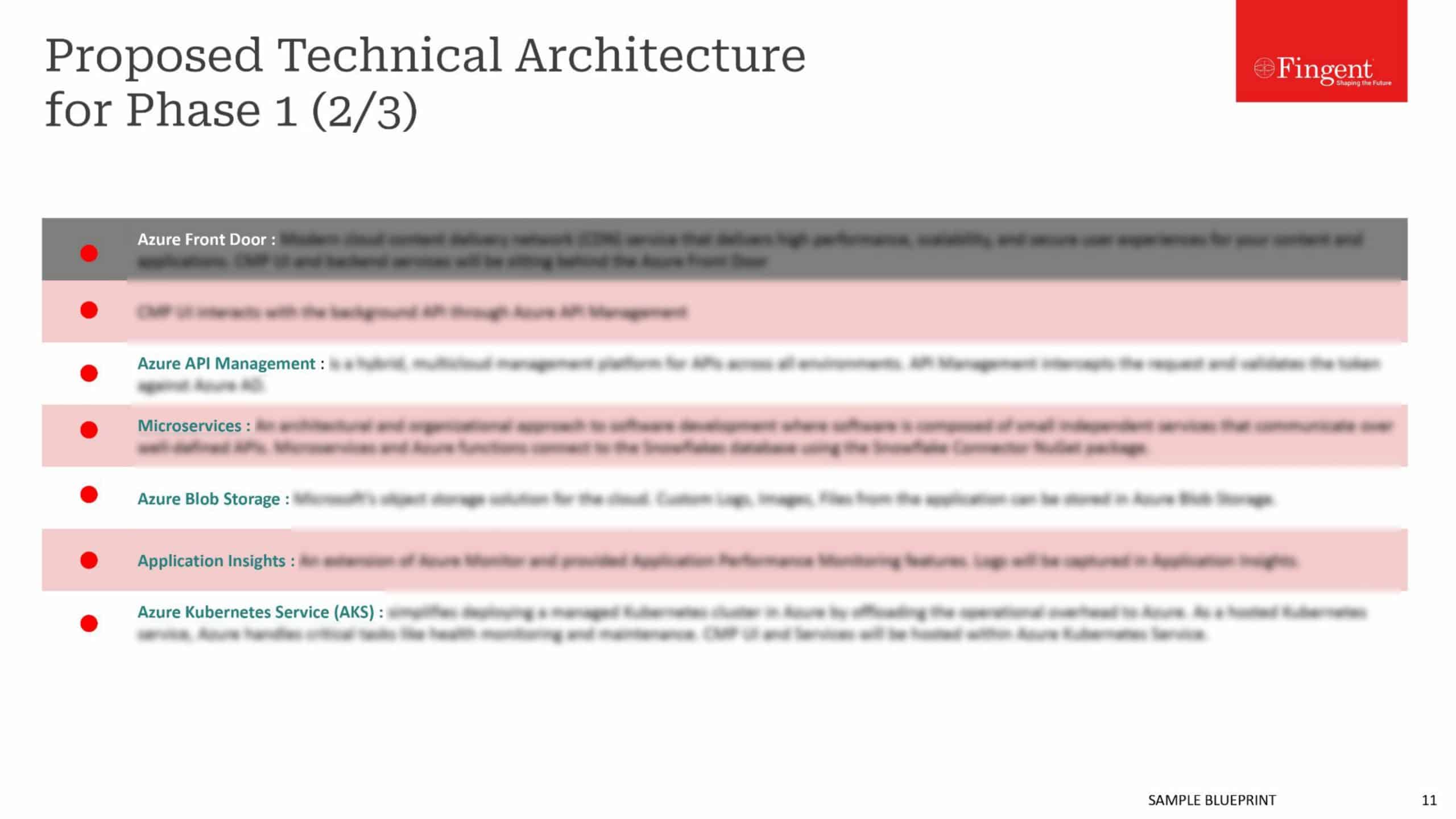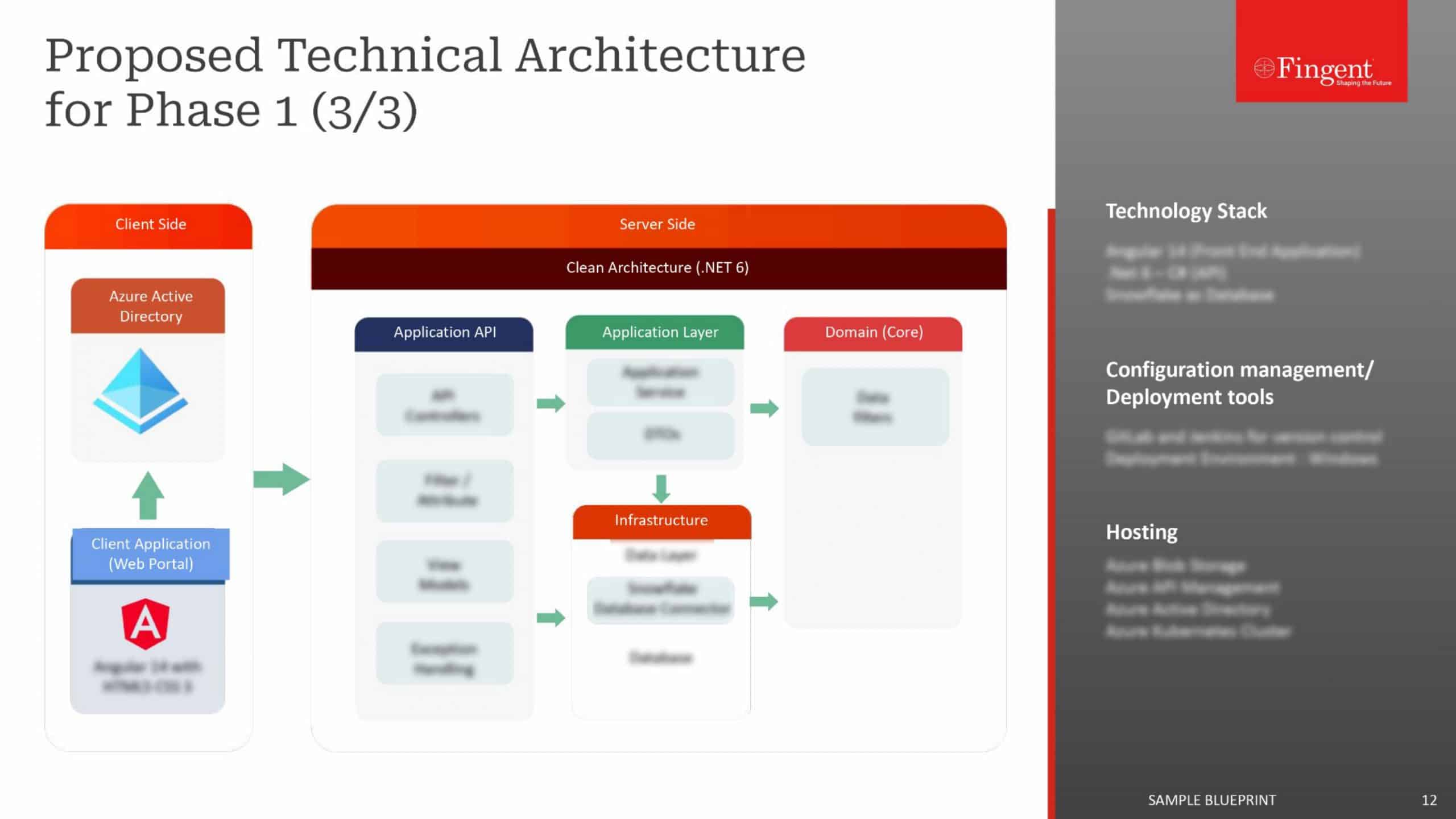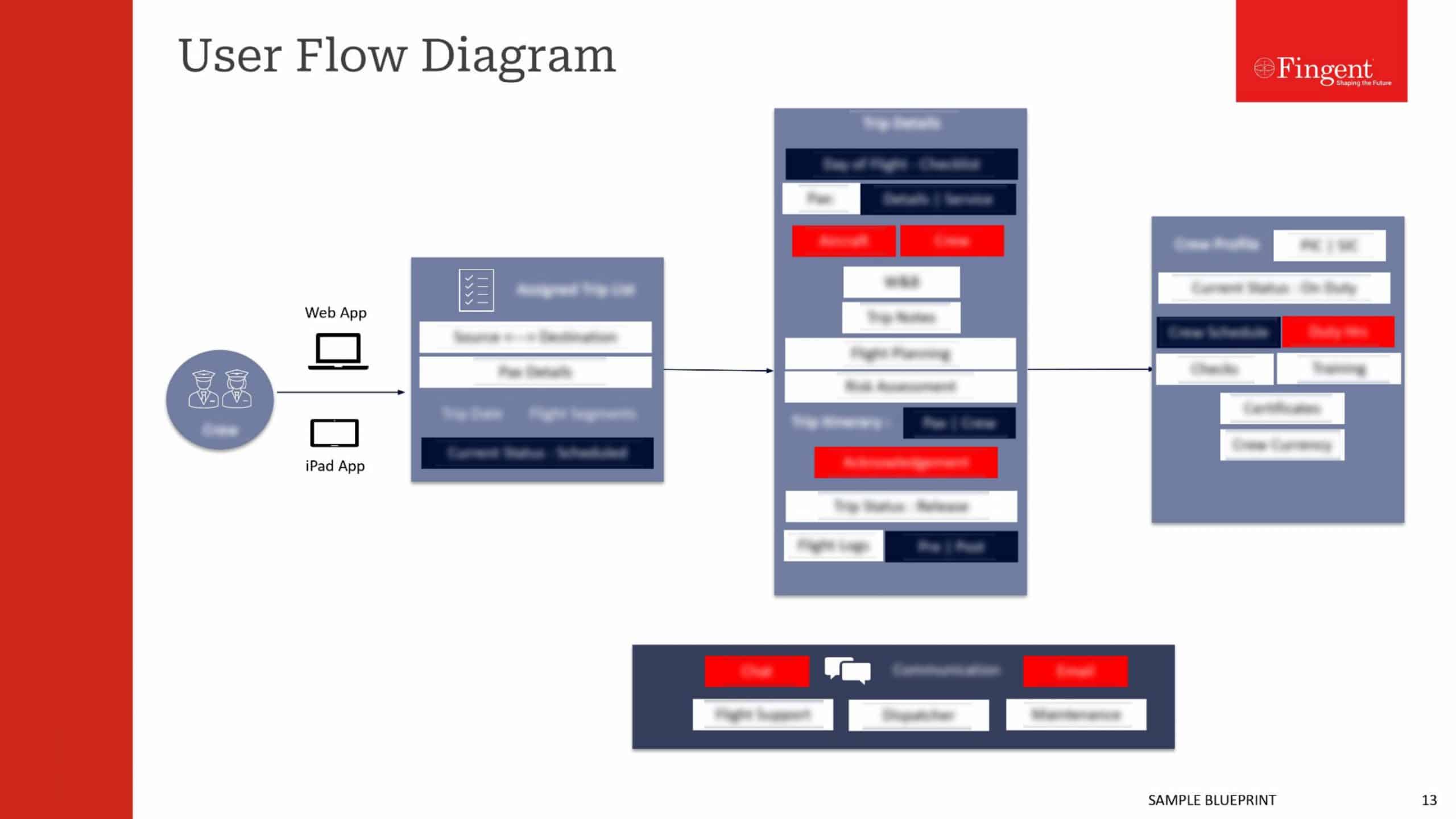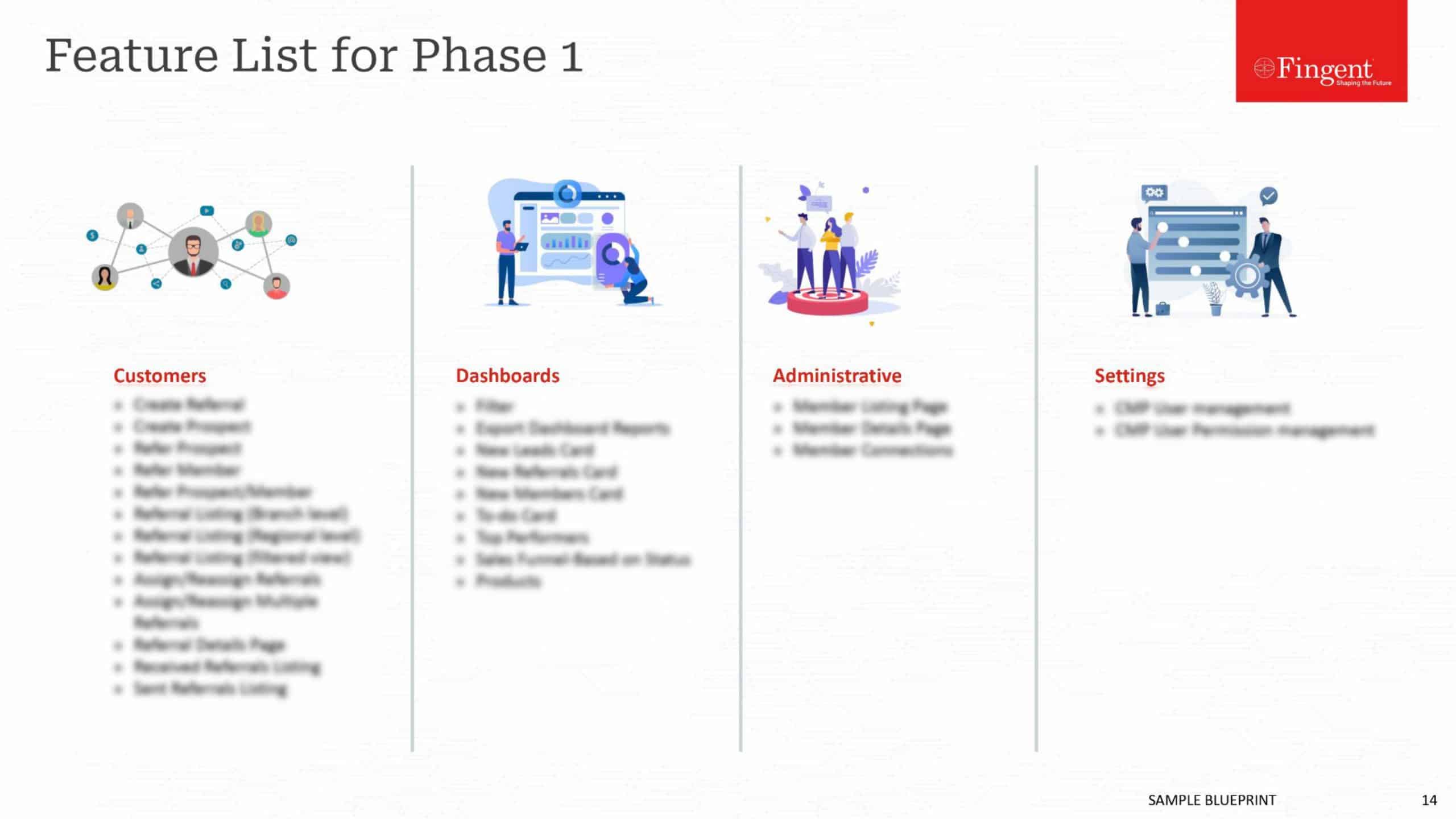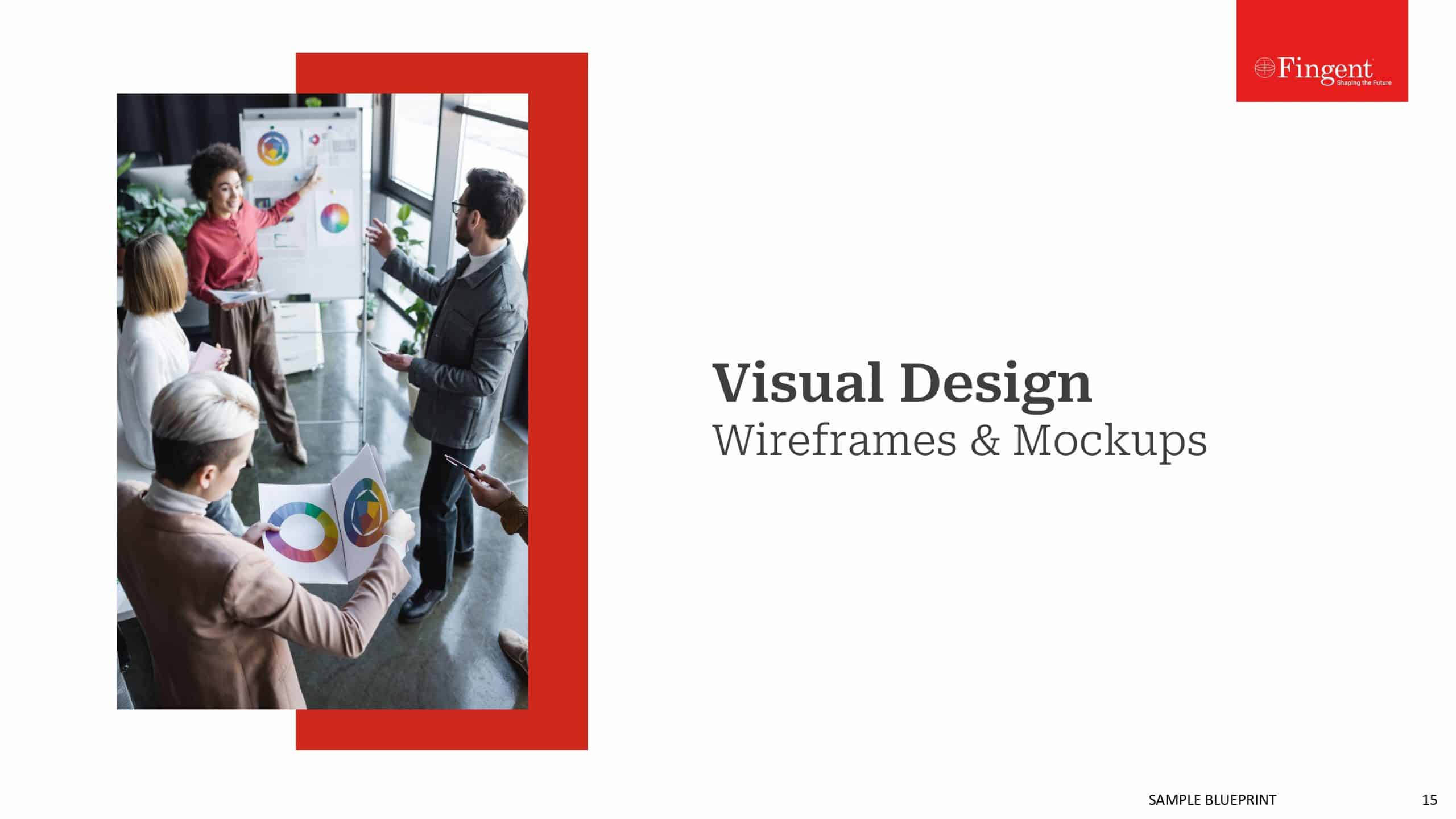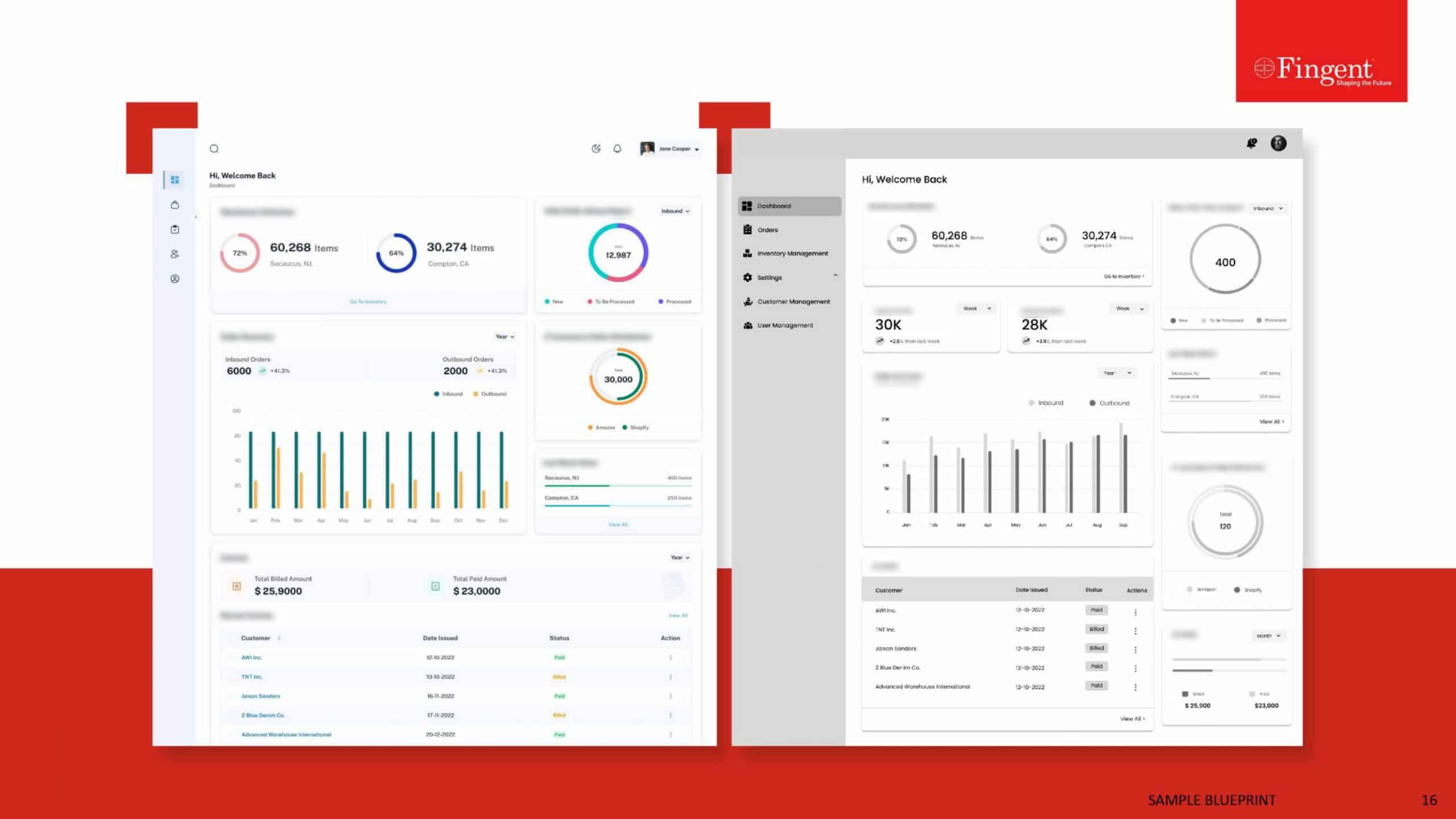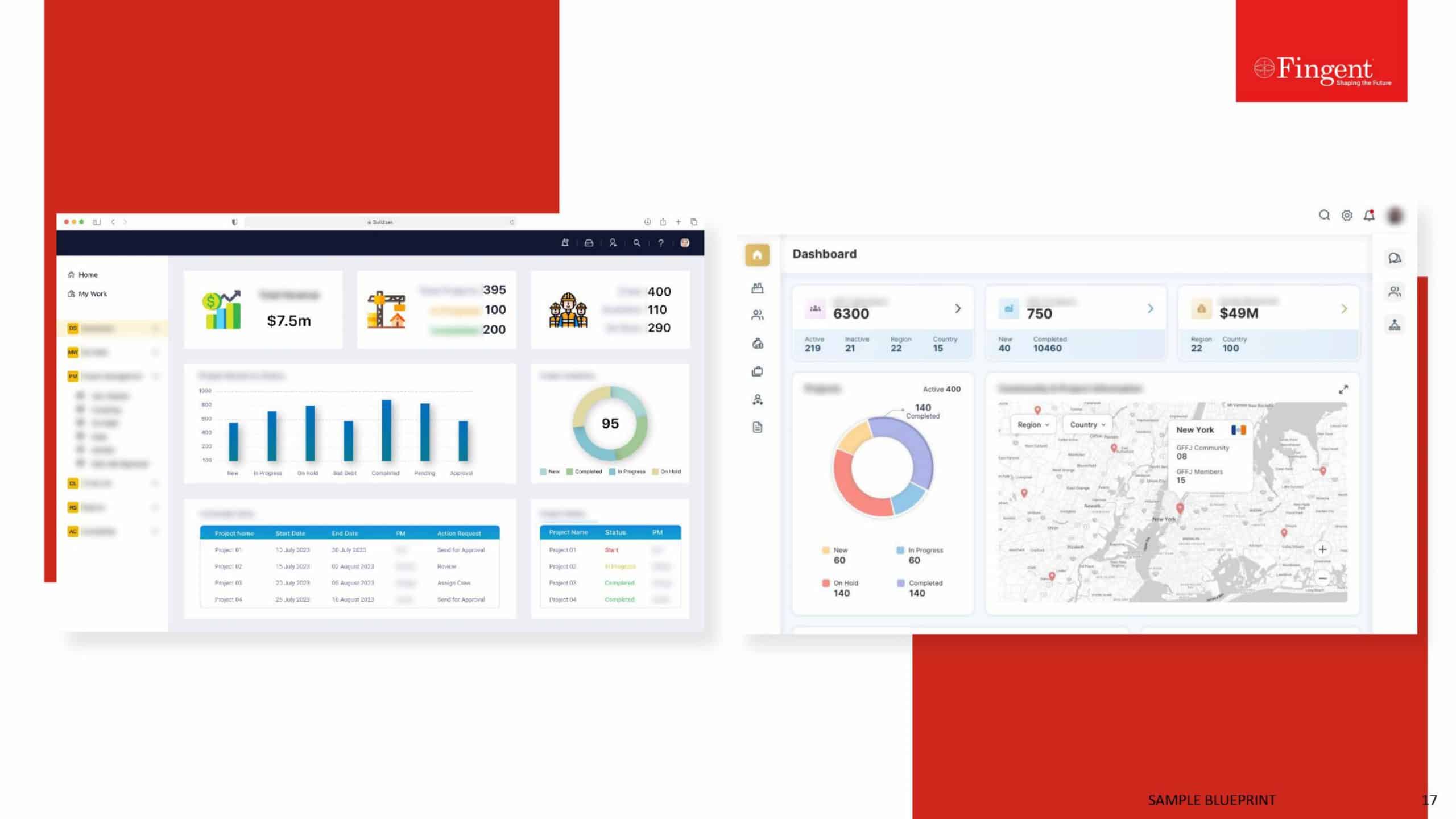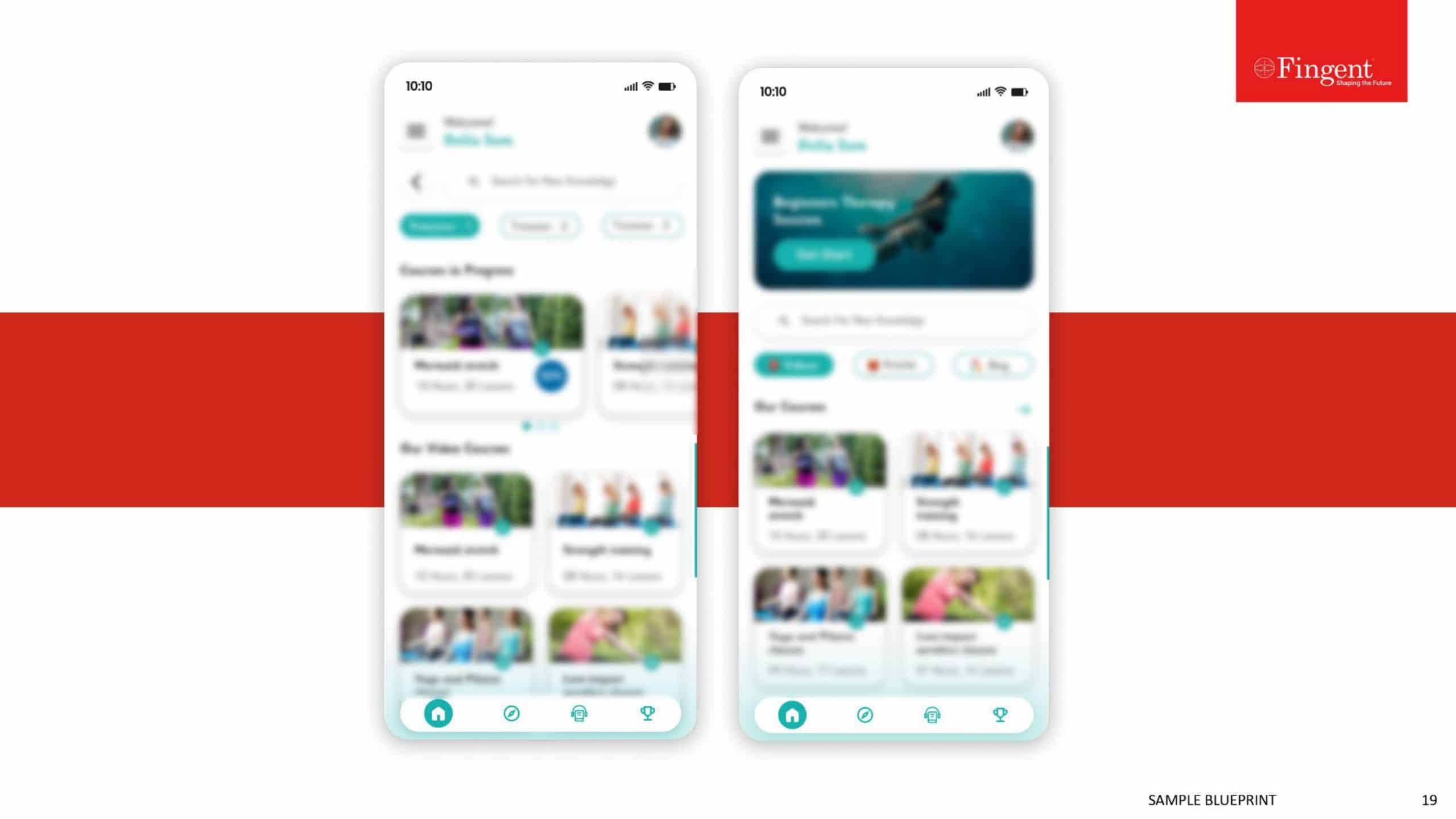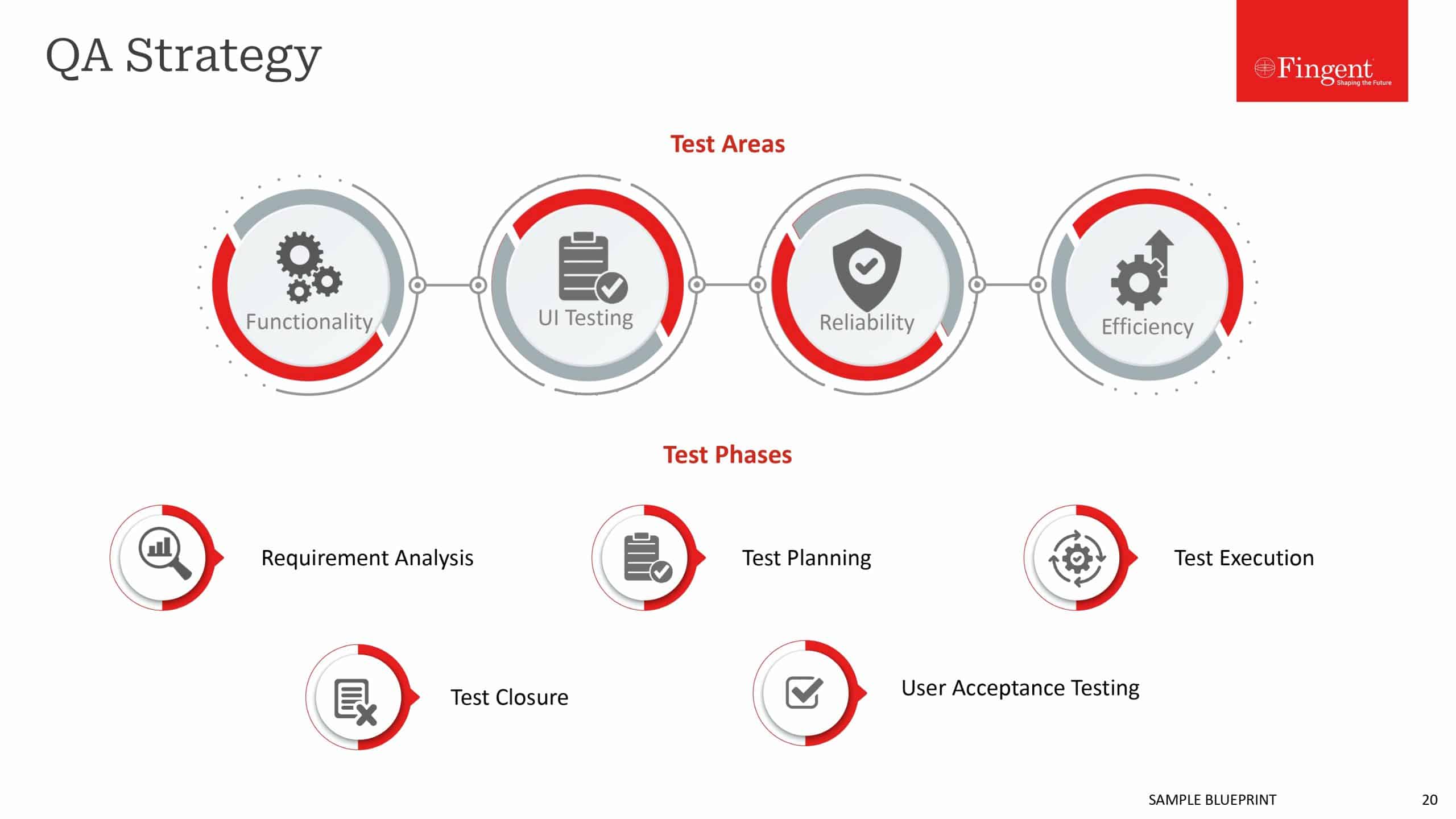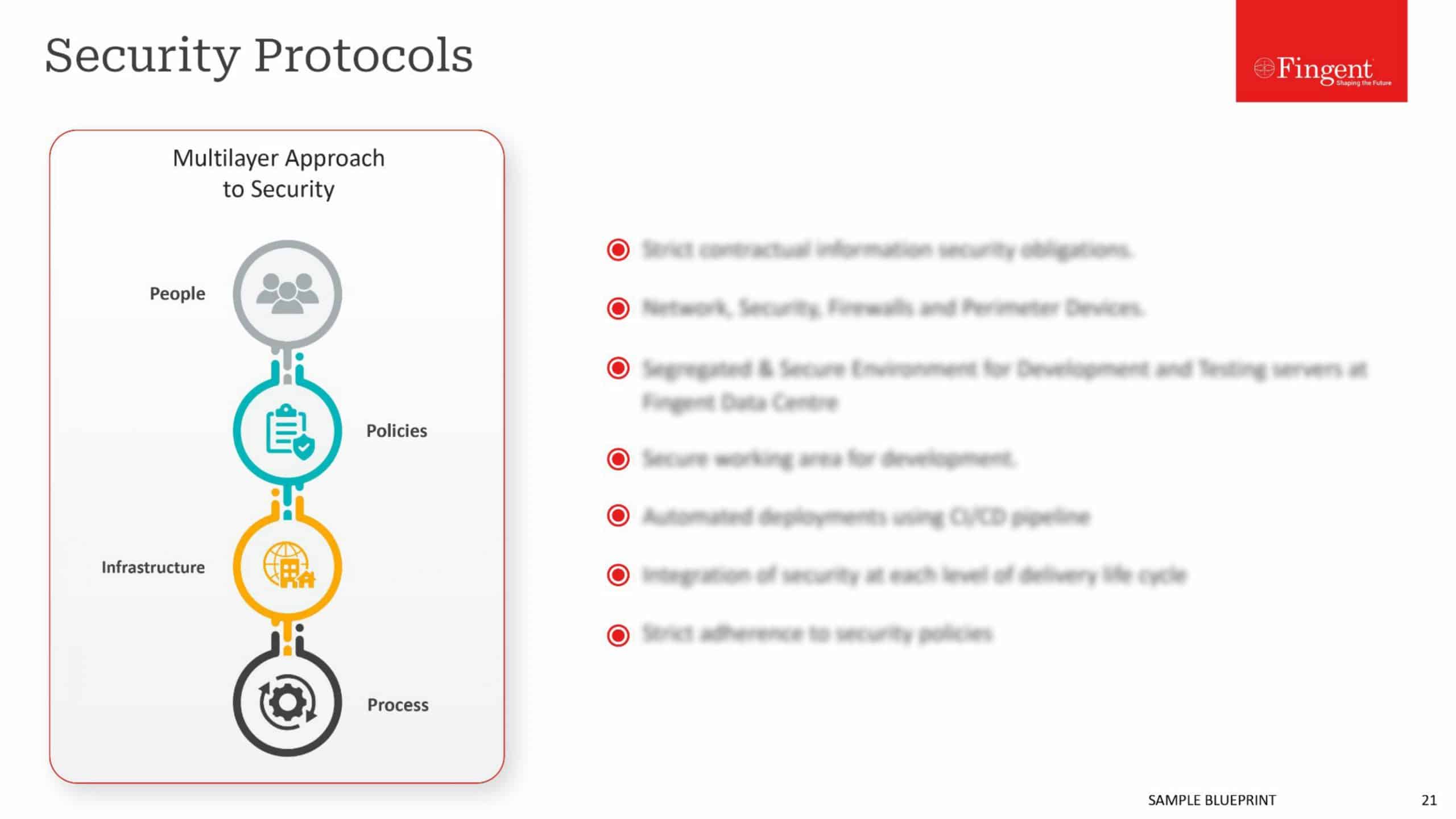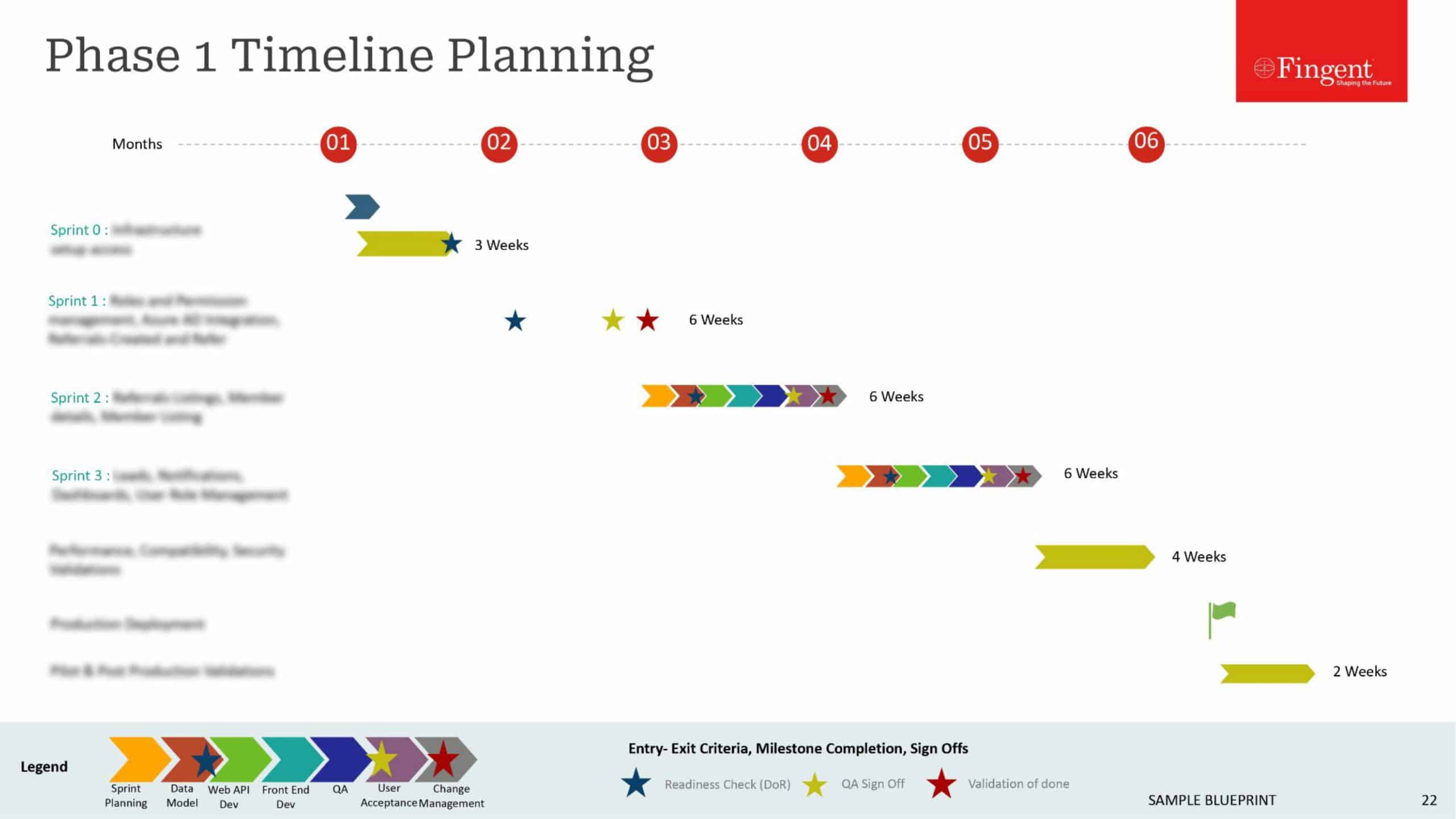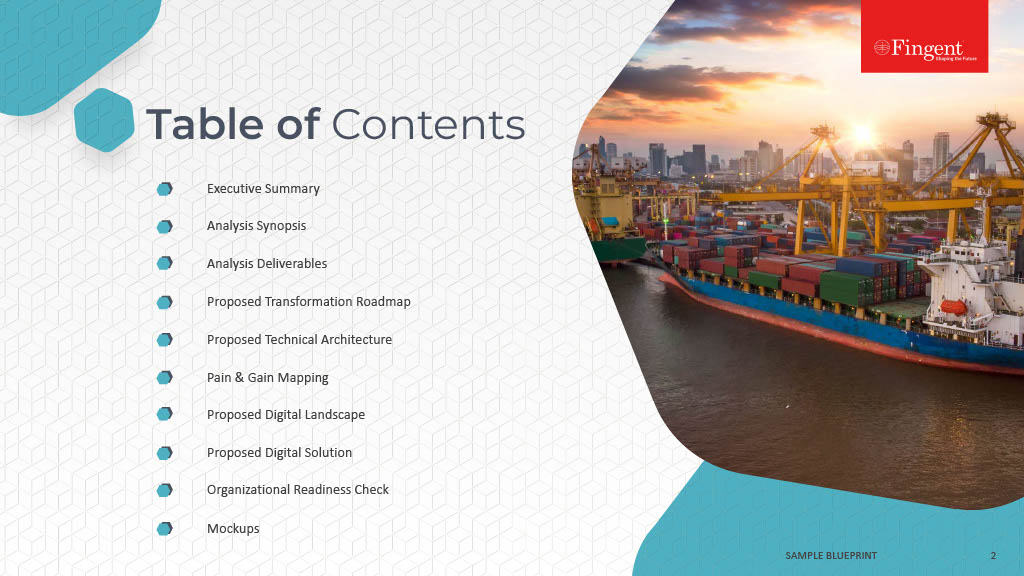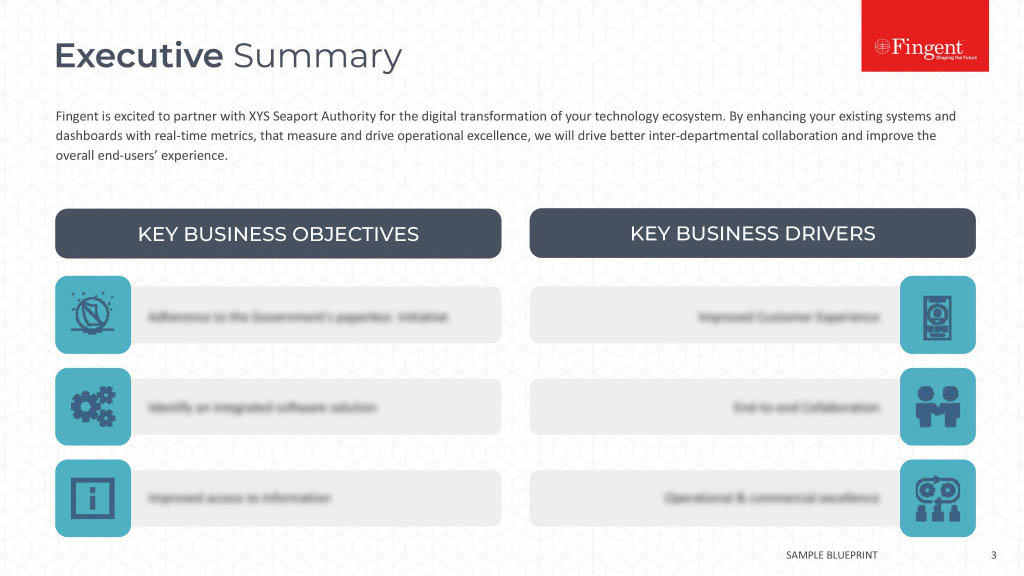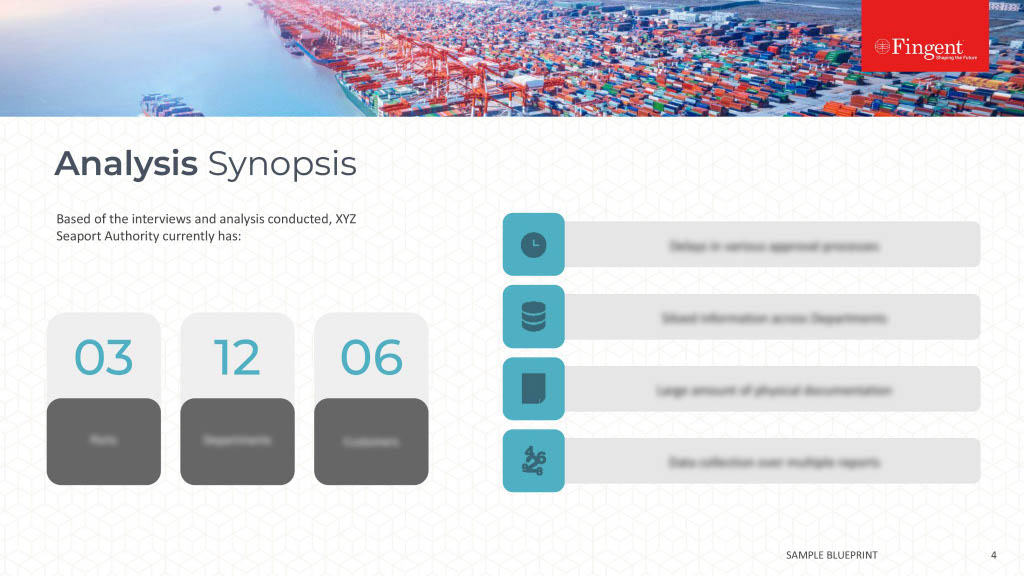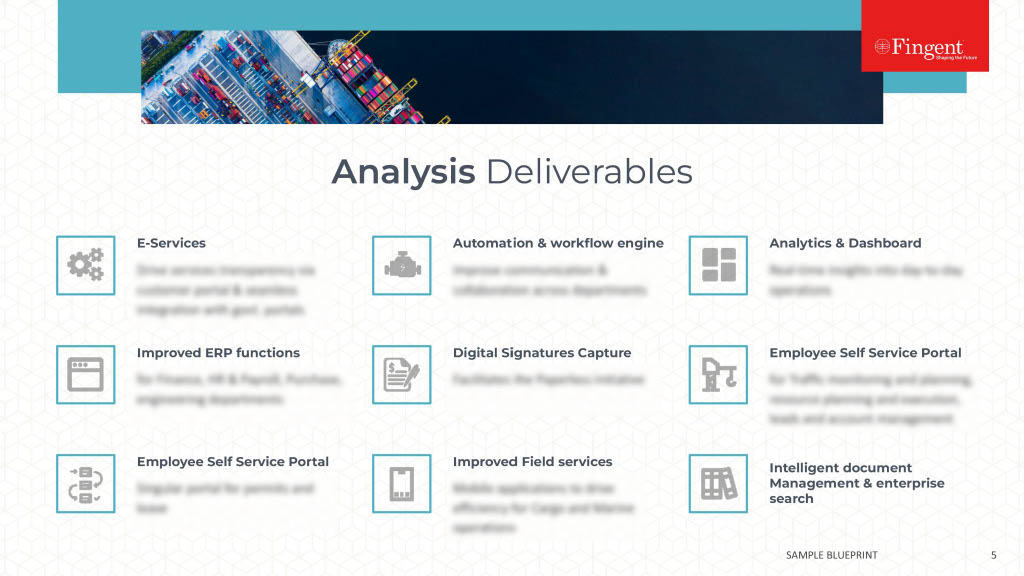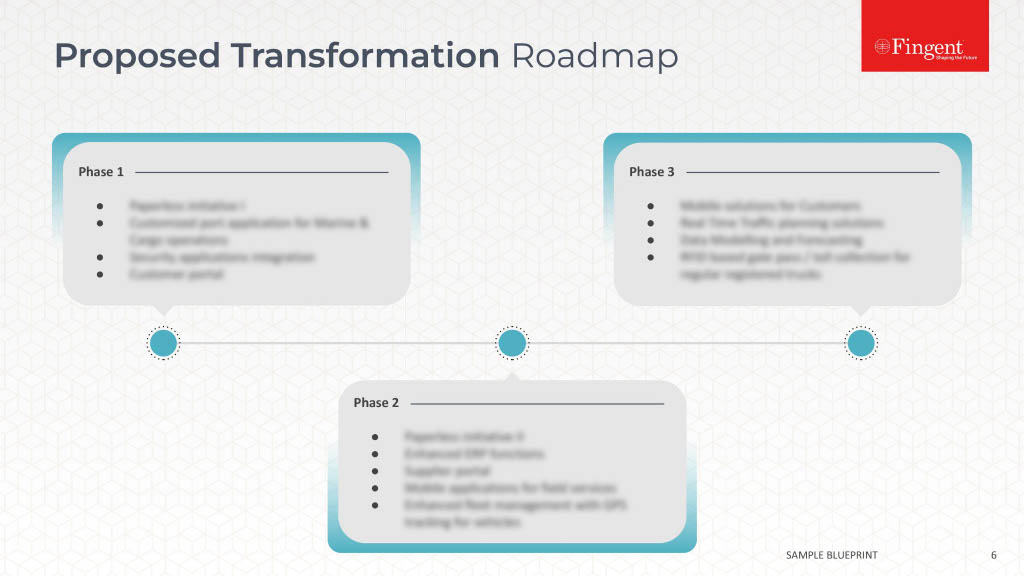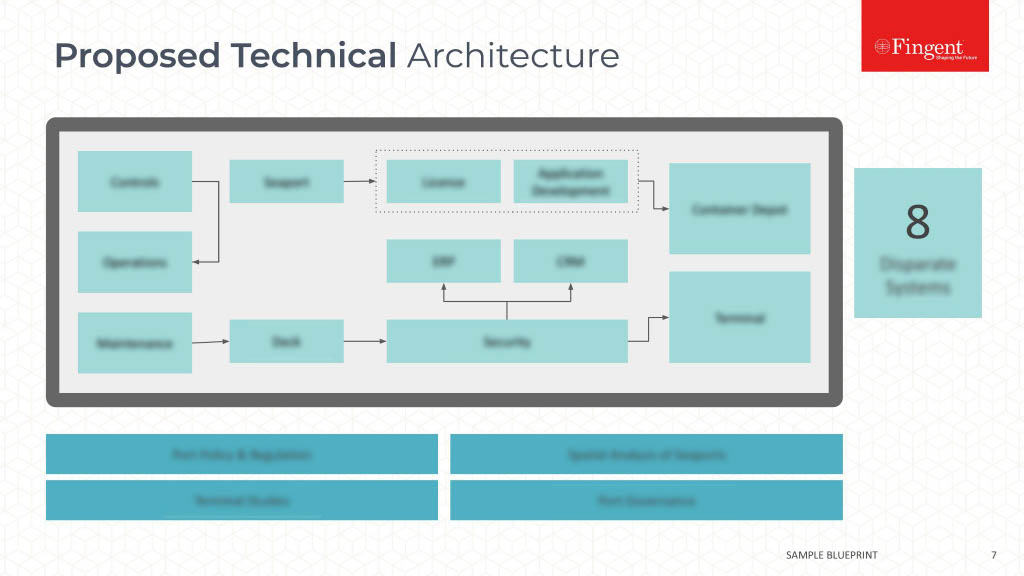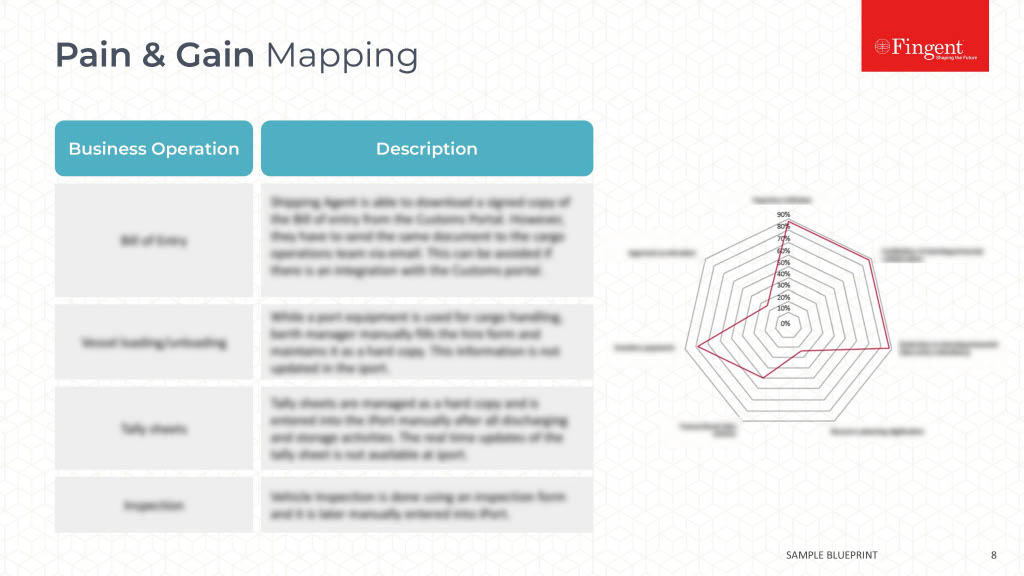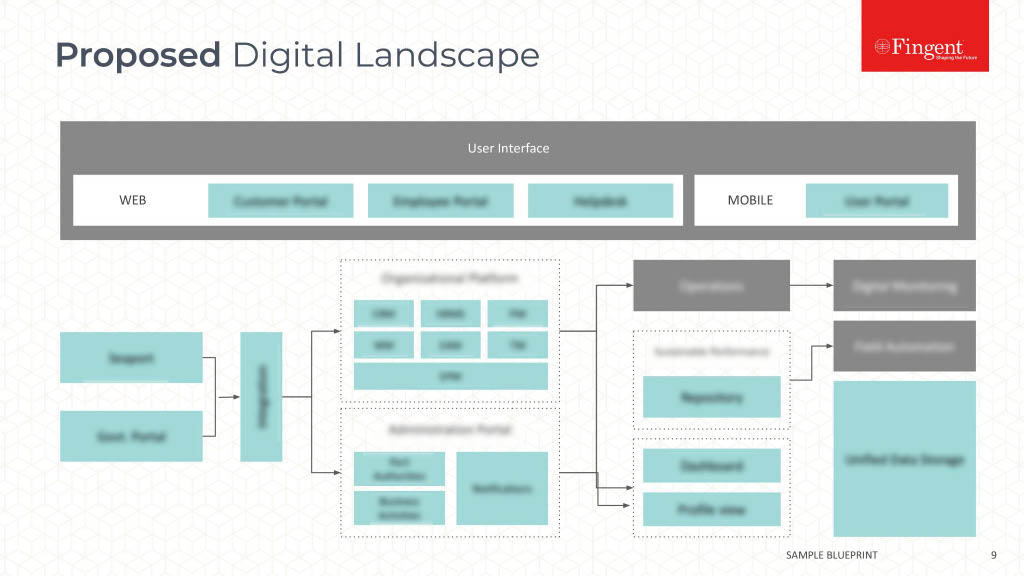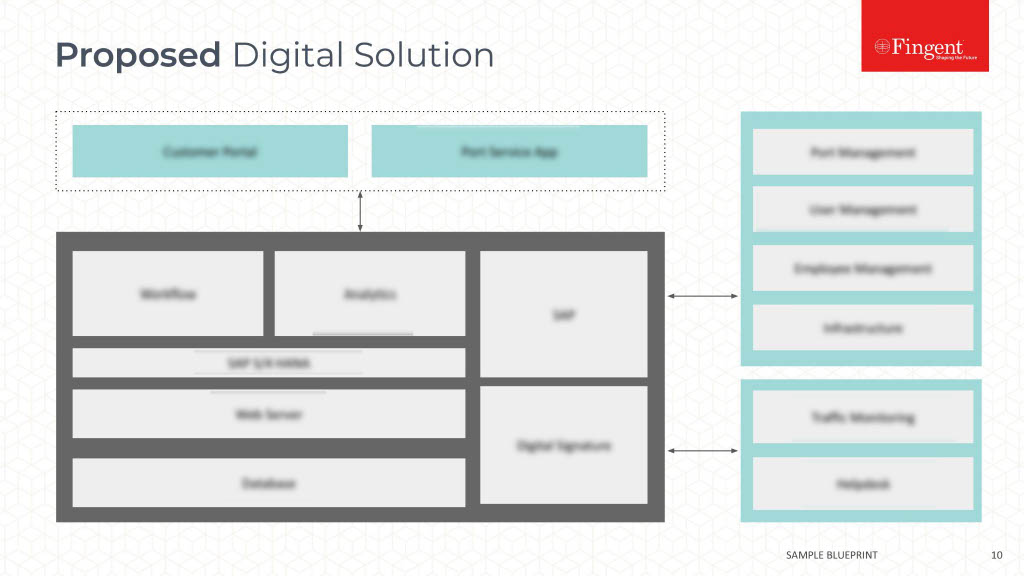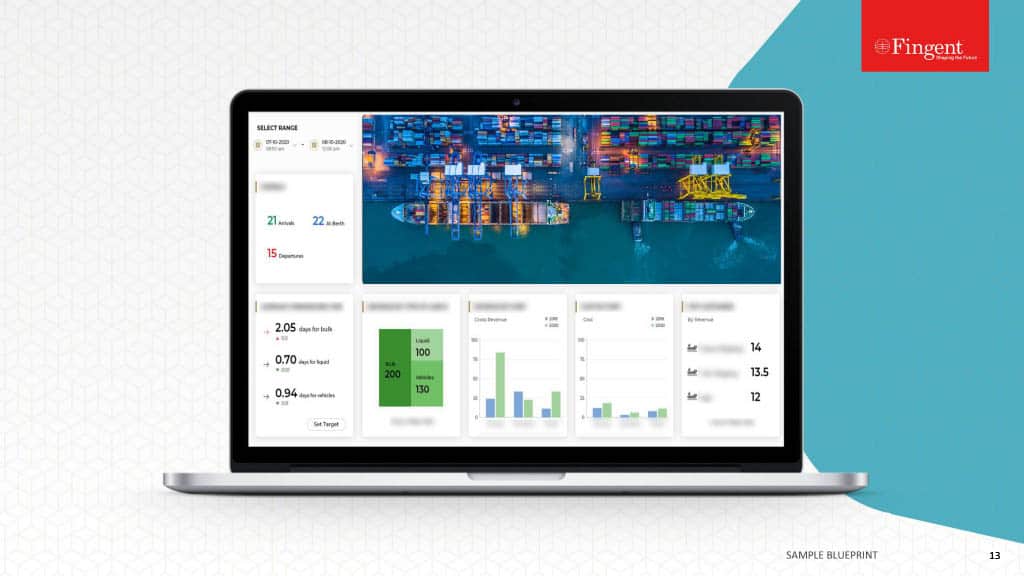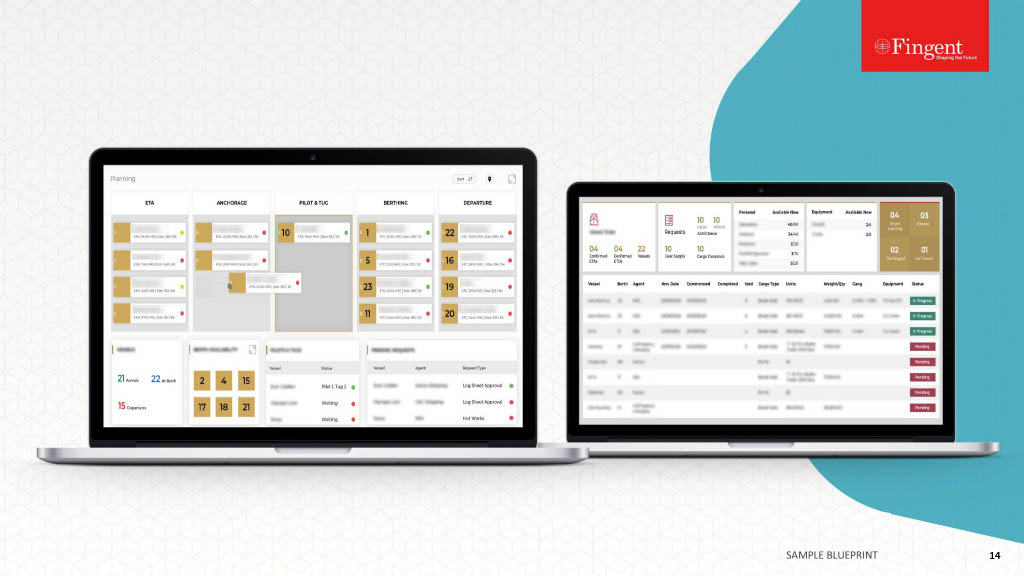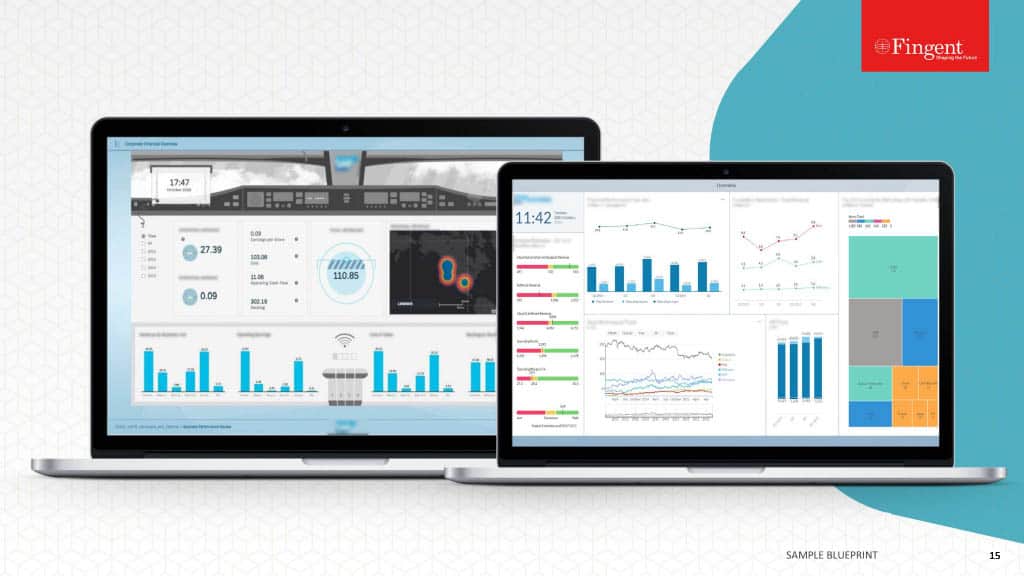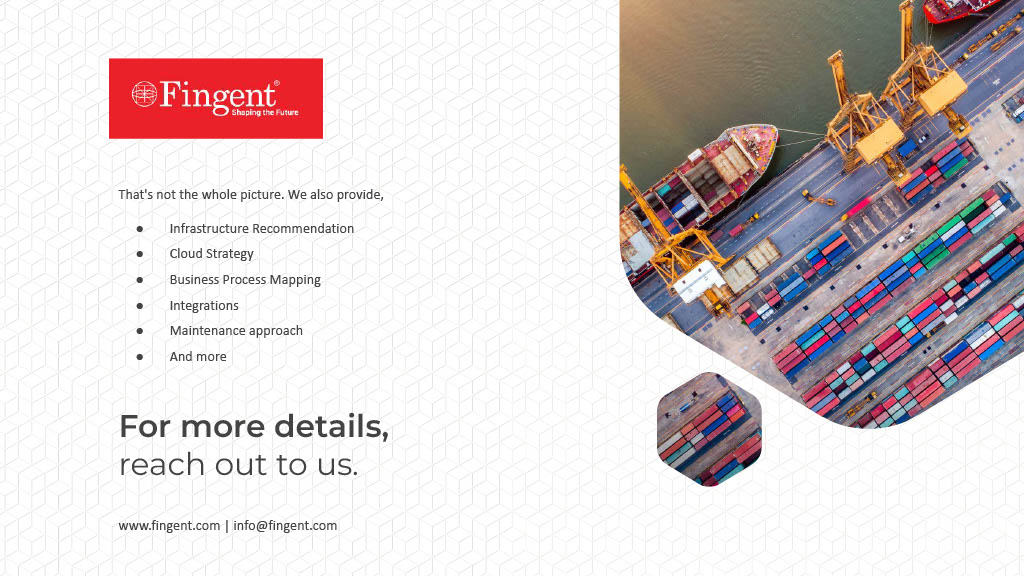Category: Digital Transformation
Are you stuck in AI pilot purgatory?
Many businesses get a great start on AI. They have promising AI pilots. Then, they are stuck in a particularly painful purgatory, never able to breathe real life into their projects. This means they often fail to deliver measurable value.
In this article, we’ll discuss why scaling AI is important. We’ll look at how you could get trapped in AI pilot purgatory. Then, we’ll provide a practical guide for companies to move from testing to actual use through a strong AI for enterprise.
Drive Maximum Business Impact With AI. Our Experts Can Help You Adopt AI with Clear,Stress-free, Quick-Win Strategies.
Why AI Scaling Matters
Launching a single AI model is easy. The real challenge is using it in various departments or locations. It also needs to meet client needs.
For companies, AI for enterprise is not a passing fad. It is an operating strategy that helps your enterprise make better decisions, cuts down on costs, and increases your competitiveness in the market. In its proper deployment, AI in the enterprise transforms all functions. It mechanizes routine tasks, foresees customer behavior, and discovers new sources of revenue.
But few AI initiatives ever get into production. In fact, Gartner estimates that over 40% of AI projects will be discarded by 2027. Most of these projects end up discarded because they can’t deliver ROI or retain stakeholder confidence.
When you get a project underway as soon as you can, it saves you effort, money, and time. Yet why is scalability so important?
- Enterprises need to move from experimentation to impact, fast. Pilots test feasibility, and scaling proves the value of the project. AI insights help businesses make smarter marketing and logistics choices. This intelligence spreads across the organization.
- Scaled AI systems learn continuously, which improves performance outcomes over time rather than staying as a one-off experiment. This provides ROI sustainability.
That’s why AI scaling from pilot to production separates visionary firms from those just experimenting with innovation.
Understanding the AI Pilot Purgatory Challenge
Many organizations are eager to begin new initiatives. Pilot projects are a great choice because they show potential. But somewhere between understanding the concept and production, the excitement fades. We call this stage the AI Pilot Purgatory, a place where great ideas stall. So, what keeps enterprises stuck here?
- Lack of clear business alignment: Many pilots show off new tech but fail to prove their value. Without measurable business outcomes, a pilot struggles to secure leadership support.
- Data silos and quality problems: AI hungers for good data. If data is disparate across departments, it can end up being inconsistent. This will hinder scaling.
- Infrastructure constraints: AI needs top-notch cloud infrastructure, data pipelines, and MLOps platforms to scale, but most companies ignore that.
- Lack of skills: To scale, data scientists won’t be enough. You require a team consisting of engineers, domain specialists, and a manager. They will keep an eye on the progress.
- Cultural pushback: Employees will push back against AI because they don’t believe in its decision, or they are afraid of being completely automated.
Eventually resulting in adoption barriers. To help your pilot escape purgatory, you need a complete enterprise AI strategy. This strategy should blend technology, governance, and cultural readiness.
Strategizing a Blueprint from Pilot to Production for AI Success
When you transition from pilot to production, the process isn’t done overnight. It is a structured journey that follows a blueprint. Here’s a blueprint to help your business scale AI from pilot to production.
1. Start with Business Value, Not Technology
Before coding for your project, determine high-impact business challenges that can be addressed with the help of AI. You can inquire:
- What are the most important processes in my company that can use automation? Are there any areas that can implement prediction to ease workflows?
- How should the project’s success be measured (KPIs, ROI, or time saved)?
This makes your AI for enterprise investment business-focused, not an experimental lab.
2. Build a Scalable Data Foundation
When your data is ready, AI success starts there. Construct central data lakes and maintain clean, labeled, and easily available data for departments. Invest in data governance frameworks such that data is of good quality and compliant.
3. Plan Scalability in Advance
Use reusable and modular blocks in building AI models on a strong foundation. Enforce MLOps practices that help integration, version control, and auto-deployment. This makes your AI a repeatable and scalable system rather than a one-time project.
4. Establish a Cross-Functional AI Taskforce
Scaling AI is an enterprise project, not an IT one. It involves more than one entity to make it work. So, you can bring in business leaders, data scientists, engineers, and compliance teams. Join forces towards a single purpose.
5. Use Ethical and Secure AI Practices
Enterprises need to focus on fairness and data privacy. To safeguard important data, establish an AI ethics board that looks carefully into policies that protect information. You can show accountability and regulatory compliance with XAI models.
6. Measure and Learn
Every successful enterprise AI strategy has ongoing feedback loops. Continuously track model performance, user adoption, and business results. Subsequently, retrain and improve models to keep pace with changing business objectives.
Strategize a Successful AI Journey for Your Enterprise. Assess AI Readiness, Spot Opportunities, and Integrate AI into Your Workflows.
Real-World Examples: Industry-Wise AI Scaling
Let’s explore how different industries are scaling AI in the enterprise effectively.
1. Banking and Financial Services
Banks lead with AI for enterprise when they use predictive analytics to detect fraud. They also use it to assess credit risk and personalize customer experiences.
Example: JPMorgan Chase’s COiN platform checks legal documents in seconds. This cuts down on spending for manual work and lowers operational costs.
Value: They experience all-round risk management and wiser decision-making.
2. Retail
AI for enterprise enables retailers to build buying experiences that are unique to their customers. It also streamlines supply chains.
Example: AI is employed by Walmart to predict customers’ demand. If their demand is altered, they modify stocks in real time.
Value: They get reduced wastage of products and improved customer service
3. Healthcare
Healthcare organizations gain from using AI in the enterprise. It helps with the before–diagnostics and predictive care. It also makes a notable difference to patient engagement.
Example: Diagnostic systems powered by deep learning can help analyze patient data and medical imaging in real time. The AI solution can be integrated with Electronic Health Records (EHRs) and lab databases. It also keeps HIPAA compliance and ethical transparency with enterprise AI strategy frameworks.
Value: Improved diagnostic accuracy, faster report turnaround time, and enhanced collaboration between clinicians and AI systems.
4. Manufacturing
AI in the enterprise changes manufacturing. It helps with predictive maintenance and quality control.
Example: Top players are using AI sensors that monitor machinery and prevent any breakdown.
Value: With this, they saved money, cut downtime, and achieved improved product consistency.
5. Nonprofits and the Public Sector
Non-profit organizations have greatly benefited from scaling AI implementations in enterprises for their workflows. It helps them to enhance engagement with donors and optimizes the way resources are utilized.
Example: UNICEF employs AI-driven data analytics to understand which regions require emergency aid.
Value: AI helped enhance their response time and effectively use their resources.
Common FAQs
Q. What is enterprise AI, and how is it different from general AI?
A. Enterprise AI is the use of artificial intelligence within large business settings. Enterprise AI is different from general AI. While general AI is used for consumer, as opposed to business, purposes and research, enterprise AI is designed to reinvent core business processes. Decision-making, prediction, automation, and customer interaction are just a few of them. It is about structured frameworks, governance models, and scalable infrastructure designed to enable the enterprise environment. Consider it as AI designed to deliver performance, compliance, and influence at scale.
Q. What is the timeline to deploy AI in a firm?
A.The timeline for implementing AI in the enterprise within a business relies on three key considerations: scope of business, data maturity, and complexity. A pilot would take 3–6 months, and a scaled deployment would take 12 to 24 months. Data-driven organizations with an adaptable culture can reduce the adoption time. Scaling is needed to plan extensively. That involves using AI to enhance processes and employee retraining. It can also establish MLOps for continuous improvement.
Q. Can small or medium enterprises scale AI successfully?
A. Yes! A size 500 fortune is not necessary to do business using AI for an enterprise. When an AI application is cloud-based, it allows SMEs to apply scalable analytics and automation. Begin small. Begin with one that has a high impact, such as sales forecasting or customer support automation. Pilot first, then roll it out incrementally. Strategic use of AI for enterprise has nothing to do with size but with clarity, intent, and action.
Q. How secure are enterprise AI implementations?
A. Enterprise AI rollouts put security at the top of the agenda. All serious AI systems abide by data protection legislation, like GDPR, and follow industry best practices. Security best practices include:
- Encryption of data in motion and rest
- Role-based access control implementation
- Conducting regular model audits
- Explainable AI (XAI) brings a whole new level of transparency
When done right, yes, enterprise AI can be secure. As secure as the systems it runs on. In fact, it can be even more secure because of its built-in anomaly detection and predictive monitoring.
How Can Fingent Help
At Fingent, we help businesses with their enterprise AI strategy. We guide them from ideas to full-scale implementation. We focus on finding real business value. We build data-driven roadmaps and facilitate responsible adoption across the enterprise. We help organizations:
- Move from pilot to production confidently
- Implement scalable and secure AI structures
- Make all transactions transparent and compliant
- Return quantifiable ROI with intelligent automation and analytics
Start your AI journey or move past pilot purgatory with Fingent. We can help you speed up transformation using AI for enterprise solutions that really work.
Think, Transform, and Evolve with AI
Scaling AI is not just about technology — it’s about transforming the way enterprises think, work, and evolve. Companies can avoid pilot purgatory by embracing an AI-based strategy that is robust and more powerful. Scalable infrastructure and an innovative culture are required. This can unlock the full potential of AI. The companies that succeed today will be leaders tomorrow.
Stay up to date on what's new

Featured Blogs
Stay up to date on
what's new



Talk To Our Experts
AI Adoption in enterprises is a no-brainer. Shouldn’t everyone be on it by now? You would think so. Businesses that have adopted it successfully are acing it. Predictive analytics, smart automation, and informed decision-making are a breeze for them.
For a few, however, AI adoption in enterprises is still patchy. Most companies have success in proof-of-concepts but fail to replicate them. In recent years, more businesses have seen the need to discard AI projects before production.
That’s why this blog talks about the most significant challenges in AI adoption, and how businesses can overcome them. Read on!
Discover How Your Business Can Harness AI For Maximum Impact
Why Enterprises Struggle with AI Adoption?
More than three-quarters (78%) of businesses apply AI in one or more business processes. While CEOs all concur that AI is the future, many find that scaling beyond pilots is challenging. Difficulty in cross-department collaboration, skills gap, unclear ROI, and security issues are some reasons.
Here is an overview of the main reasons why companies are having trouble applying AI:
- Data Complexity and Silos : AI models depend on data quality. Yet, 72% of enterprises admit their AI applications are developed in silos without cross-department collaboration. This fragmentation reduces accuracy and scalability.
- Talent and Skills Gap: AI adoption demands data scientists, ML engineers, and domain experts. But 70% of senior leaders say their workforce isn’t ready to leverage AI effectively.
- High Costs and Unclear ROI: Enterprises hesitate when infrastructure, integration, and hiring costs overshadow immediate returns. In fact, only 17% of companies attribute 5% or more of their EBIT to AI initiatives.
- Organizational Resistance to Change: Employee resistance is a major issue. 45% of CEOs say their employees are resistant or even openly hostile to AI.
- Security, Privacy, and Issues with Compliance: AI consumes sensitive data. Due to this, abiding by laws like GDPR becomes difficult. Lacking effective governance, companies are worried about reputation damage and penalties.
A Look into the Risks and Blockers of Scaling AI Across Organizations
Even when pilots succeed, enterprises face barriers in scaling AI across the organization. The key factor is the lack of understanding of the way AI models operate. Model drifts that reduce accuracy, integration challenges, and cost overruns are some reasons that could impede scaling. Let’s look at some key risks and blockers of AI adoption in enterprises:
1. Shadow AI and Rogue Projects
Departments start “shadow AI” projects with little IT governance. Local success translates to enterprise-wide failure, forming silos, duplication, and the danger of non-compliance.
2. Model Drift and Maintenance Burden
AI models are degrading over time with changing market trends and user behavior. Enterprises don’t know the price of ongoing monitoring and retraining. This results in “model drift,” which reduces accuracy and reliability. Poorly trained models may amplify biases, risking reputational and legal challenges.
3. Lack of Interoperability Standards
With more AI platforms emerging, firms battle interoperability. They are often hampered by integration challenges in scaling AI owing to variable data formats and incompatible systems.
4. The Hidden Costs of Scaling Infrastructure
Scaling AI doesn’t take just algorithms. There’s more behind the curtain. Cloud storage, GPU computing power, and security controls cost money. Most firms underestimate these hidden expenses, leading to cost overruns.
5. Cultural Misalignment Between Business and IT
Successful AI demands cross-functional alignment. IT is worried about security and compliance, and business units are always in a rush. The clash of cultures gets in the way of execution and keeps enterprise-wide scaling at bay.
Tips To Overcome These Challenges
AI adoption challenges in enterprises are common. But that does not mean that they aren’t impossible to overcome. Here are some tips to speed up AI adoption in enterprises:
- Establish Crystal Clear Business Goals: AI must address business priorities, not simply adopt technology for the sake of it. Leaders need to determine high-impact opportunities. Fraud detection, customer service automation, and demand forecasting are priorities.
- Invest in Data Readiness : High-quality, integrated data is key. Enterprises require good governance and integrated data in real-time. Organized data habits are far more likely to derive ROI from AI.
- Organize Cross-Functional Teams :AI is best with IT, business, regulatory, and domain subject matter experts in collaboration. It enables scalability and reduces ethical risk.
- Upskill and Reskill Talent: Cultural readiness is needed for AI deployment. Only 14% of organizations had a completely synchronized workforce, technology, and growth strategy—the “AI pacesetters”. Learning investments prevent more transition problems.
- Pilot Small, Scale Fast: Pilot projects must produce quantifiable ROI before large-scale adoption. This instills organizational confidence and reduces financial risk.
- Emphasize AI Governance and Ethics: Open models, bias testing, and compliance frameworks establish employee and customer trust.
- Collaborate with Seasoned Providers: Companies that lack in-house expertise bring value by partnering with seasoned AI providers like Fingent, which are focused on filling skill gaps, managing integration, and scaling responsibly.
Popular FAQs Related to AI Adoption in Enterprises
Q1: What are the main barriers to AI adoption in enterprises?
The primary inhibitors of AI adoption in enterprises are siloed data. The absence of competent talent, vague ROI, cultural opposition, and governance are a few other factors that pose challenges in AI adoption.
Q2: Why do AI pilots work but get stuck on scaling?
This happens because scaling needs robust data systems, governance, and alignment at departmental levels. Without them, pilots do not work in production.
Q3: How can businesses overcome AI adoption challenges?
AI adoption challenges in enterprises can be overcome if you first set clear business objectives. Once that is done, invest in upskilling employees and partnering up with seasoned AI providers like Fingent.
Q4: Is AI adoption in enterprises worth the risks?
Yes! Best-practice adopting firms are more likely to see positive returns and ROI. But firms with no AI strategy witness business success only 37% of the time. Whereas firms with at least one AI implementation project succeed 80% of the time.
Q5: Which are the industries that benefit most from AI adoption?
Tech seems to come immediately to mind. But the past few years have seen other industries jostle for space on the top list of adopters. The pharmaceutical industry has discovered what AI can do for clinical trials. Chatbots and virtual assistants have revolutionized banking and retail. Predictive maintenance has smoothed out many a problem for the manufacturing industry.
Strategize a Smooth AI Transition. We Can Help You Effortlessly Integrate AI into Your Existing Systems
How Can Fingent Help?
At Fingent, we deal with the intricacies of AI implementation in business organizations on a regular basis. Our capabilities are:
-
- Scalable AI solution planning based on business objectives.
- Effective data governance models.
- Glitch-free integration with legacy systems.
- Ethical and transparent AI model building.
- Cultural transformation through adoption and upskilling initiatives.
Whether your business is just starting pilots or fighting to scale, Fingent can assist in optimizing ROI and mitigating risks. Learn more about our AI services here.
Knock Those Barriers With Us
AI adoption barriers in business still keep organizations from realizing potential. The silver lining? With the right strategy and partnerships, businesses can blow past the challenges and drive a successful AI adoption journey.
The future of AI adoption in enterprises is not algorithms; it’s about trust, collaboration, and a vision for the longer term. Those who act today will reign supreme tomorrow. Give us a call and let’s knock these barriers down and lead your business to making a success of AI.
Stay up to date on what's new

Featured Blogs
Stay up to date on
what's new



Talk To Our Experts
Walk into any modern factory today, and you will notice something different. No noisy jungle of machines. No conveyor belts. No caution tape. It is alive—with sensors, data dashboards, and smart devices all working in perfect harmony. So what’s really happening? It is digital transformation in manufacturing! And what’s powering it beneath all the blinking lights and high-tech gear? Not just automation. Not just AI.
But something more fundamental and flexible: custom software for manufacturers.
Would you like to know how custom software development impacts the manufacturing industry? This is a great question to ask—and it is one that deserves a deeper dive than just “it improves efficiency.”
This is because in a world where milliseconds matter and errors can cost millions, manufacturers are trading in cookie-cutter tech for customized digital tools that fit like they were built in-house. This blog discusses the why and how.
Why Off-the-Shelf Tools Are Not Built for Today’s Manufacturing
Off-the-shelf software might work fine for smaller businesses or simpler workflows. Does it work when you are trying to juggle multiple vendors, unpredictable supply chains, compliance headaches, and razor-thin margins?
Not really, that is when the cracks start showing.
One Size Doesn’t Fit Anyone
Generic tools are like buying sneakers in “one universal size.” Great in theory—useless in practice.
Your workflows are unique. Whether you are assembling high-precision auto components or crafting handmade soap, your challenges are different. Your systems should reflect you, not the average of everyone else.
Your Old Systems Don’t Want a New Stranger
Many manufacturers still rely on older, legacy systems. These may be clunky, but they work. Introducing a plug-and-play app that can’t “speak” their language? That creates silos and communication breakdowns.
What you need is manufacturing process optimization software that knows how to bridge the old and new, without breaking everything in the process.
You Need to Grow Fast—Not Wait for Updates
Markets shift. Product lines change. New regulations show up uninvited. Standard software just does not pivot fast enough. You are left with a system that ages faster than it improves.
On the other hand, custom solutions grow with you. Want to add a new plant? No problem. You need to integrate with a supplier in another country? Done.
Question worth asking: Why stick with software that asks you to adapt, when you can build one that adapts to you?
Control Should Be Yours—Not the Vendor’s
Let’s be real: when you’re using commercial software, the vendor decides when you get updates, what features are prioritized, and how fast bugs are fixed.
But with custom ERP for manufacturers, you’re in control. You steer the roadmap. You set the priorities.
Power Your Manufacturing With Modern Approaches Turn To Custom Software Development and Deploy The New-age Technologies
Custom Software: The Real Backbone of Modern Manufacturing
How Custom Software Development Impacts the Manufacturing? It becomes your edge. Your secret weapon. Your advantage.
Real-Time Production Visibility
Imagine seeing, in real time, every machine’s status, every order’s progress, and every bottleneck in your system—before it slows you down.
Successful digital work management (DWM) systems deliver value by increasing the efficiency of internal and external maintenance labor, reducing planned downtime through shutdown and outage optimization, and providing the opportunity to upskill the maintenance workforce. Taken together, these levers can lead to cost reductions of 15 to 30 percent.
That’s not a pipe dream. That is what happens when you invest in smart manufacturing solutions tailored to your workflow.
And the best part? You are not reacting anymore. You’re anticipating. Which means faster decisions and fewer errors. Think of it like upgrading from a map to GPS—you’re no longer guessing where the traffic is.
Predictive Maintenance: Don’t Just React—Prevent
Downtime is the silent killer of productivity. One broken machine can throw your perfect plan off track.
Across a wide range of sectors, it is not uncommon to see 30 to 50 percent reductions in machine downtime, 10 to 30 percent increases in throughput, 15 to 30 percent improvements in labor productivity, and 85 percent more accurate forecasting.
With manufacturing process optimization software, predictive maintenance becomes standard. Smart sensors detect patterns, algorithms flag anomalies, and you get alerts before a breakdown happens.
That’s the power of custom software. It doesn’t just report problems. It prevents them.
Data That Means Something
It is really not about how much data you collect. It is about how quickly and clearly you can act on it.
Custom systems help you visualize the right KPIs at the right time—no fluff, no clutter. That means managers, machine operators, and execs all work from the same truth, in real time.
Integrated Supply Chain Management
Manufacturing does not stop at the factory floor. Obtaining goods, logistics, and inventory play a huge part. With custom ERP for manufacturers, every part of your operation—from vendor management to delivery schedules—can be unified in one place.
That means no more double data entry or emailing spreadsheets back and forth.
Remote Monitoring & IoT Integration
With smart sensors, wearables, and IoT devices becoming the norm, manufacturers need systems that can gather, analyze, and respond to data from hundreds of sources. Custom solutions can be designed to connect to all your devices and give you complete remote control.
Whether you’re on the factory floor or across the globe, you’ll stay in the know.
Benefits of Custom Software in Manufacturing
We have seen how custom tools work. Now let’s talk about why they are worth every penny.
1. Higher Operational Efficiency
Automated processes, data accuracy, and real-time updates mean fewer delays, less rework, and smarter use of resources.
2. Cost Savings in the Long Run
Yes, there is an upfront investment. But custom software reduces errors, minimizes downtime, and boosts productivity—saving you more over time than you’d spend fixing issues with generic tools.
3. Competitive Edge
When you are running lean, responding fast, and making data-backed decisions, you naturally outperform the competition. That’s what digital transformation in manufacturing is all about—staying ahead of the curve.
4. Customer Satisfaction
Faster delivery times, better quality control, accurate tracking, and clear communication? That’s what your customers love. Custom software makes it possible.
The Hidden Wins: What Most People Miss About Custom Software
Everyone talks about efficiency and automation. Sure, those are important. But here is the gold that is every so often unnoticed:
1. Retain the Intelligence in Your Organization
Your top engineers and operators know the quirks of every process. But what happens when these stalwarts leave or retire?
With custom ERP for manufacturers, their insights become part of the system. Their problem-solving logic becomes code. Their workflow gets preserved—not lost.
2. Improve Team Morale and Adaptability
Let’s face it: people resist clunky software. But when tools are designed around how they already work, adoption goes up. Frustration goes down. Teams enjoy using the tools they’re provided.
Thought to reflect on: Are your tools helping your people work smarter—or just adding digital friction?
3. Differentiate Yourself from Competitors
Your competition might have access to the same machines, the same suppliers, maybe even the same customers. But what they do not have is your custom-built software system that reflects your way of doing things.
That is your edge. That is what turns good into great.
Case Study Spotlight: A Real-World Win
Let’s look at a real example.
One of Fingent’s clients—Lakeside Cabins—wanted to streamline their processes and deliver faster with more accuracy. They also wanted to modernize their approaches and offer unique experiences for their customers.
Fingent helped the client deploy 3D Configurators that enabled them to involve their customers through their web portal in designing the cabins at each stage of production. The customers felt more included and valued, plus the manufacturing outcomes were more error-free and sustainable.
That’s smart manufacturing solutions in action.
3D Web Configurator For Cabin Design
How Should Manufacturers Handle Custom Software?
If you are considering taking the leap, here are some initial steps you can begin with:
Audit your current systems.
What’s working? What’s not? Talk to your team. Gather feedback.
Identify your biggest pain points.
Focus on the challenges that are costing you time or your precious resources.
Start small but think big.
You don’t need a full-blown overhaul overnight. Begin with one system or process and scale up.
Choose the right partner.
Custom software is only as good as the team building it. Partner with a firm that has manufacturing experience and a consultative approach.
Why Fingent?
At Fingent, we don’t just write code. We solve problems.
Having years of experience in digital transformation in manufacturing, we comprehend the distinct challenges of the industry. Our team collaborates closely with clients to create customized tools that produce significant effects—from the factory floor to the executive suite.
We combine the strength of manufacturing process optimization tools, tailored ERP for producers, and adaptable, intelligent manufacturing solutions to develop systems that not only function—they perform miracles. From streamlining operations to modernizing legacy infrastructure, we ensure every solution is future-ready, not just functional.
And we do not believe in copy-paste tech. We trust in tailor-made excellence—software that feels as if it was designed specifically for you.
Whether you’re delving into automation, dealing with obsolete processes, or set to streamline your entire production pipeline, our team is prepared to dive in and start building.
Final Take: Don’t Buy the Future—Build It
Digital transformation in manufacturing is not just about modernizing. It’s about redefining how you compete.
Custom software is no longer a luxury. It’s the blueprint for the next generation of manufacturers. It’s about rethinking everything—from supply chain to shop floor—in a way that fits your DNA.
So here’s the question:
Are you still trying to retrofit your factory to someone else’s software—or are you ready to build tools that are made for you, by you, and grow with you?
Want to transform your operations with tailor-made tools? Then don’t follow the crowd—lead it. Let Fingent be your partner in progress. Let’s build something powerful together.
Stay up to date on what's new

Featured Blogs
Stay up to date on
what's new



Talk To Our Experts
All businesses are built on data. But the question is: Is your business truly driven by data? Or are you merely gathering data without a strategy? An effective Data Engineering strategy might be the key to standing out in the market instead of lagging behind.
Let us help you find out.
Data Engineering: The Backbone of Modern Business Intelligence
In a data-driven age, where information is currency, the businesses that harness data are the only ones staying competitive. Raw data can be a terrifying nightmare because it can be messy and disorganized. Above all, you will find it nearly impossible to uncover valuable insights. That’s why you need Data Engineering.
Drive Business Excellence with Intelligent Data
Harness Data Engineering for Boosted Operational Success
What is Data Engineering?
Simply put, Data Engineering is all about creating, building, and maintaining systems. It enables you to collect, store, analyze, and separate relevant data. In other words, it refines raw data into a more digestible form. This allows you to now harness its power to its full potential. Without this crucial step, businesses are left drowning in a sea of digital clutter. They miss out on valuable opportunities for growth and innovation.
If you want to unlock the true potential of your data assets and stay ahead of the competition – let data engineering pave the way for success.
Why Is Data Engineering a Big Deal?
The significance of Data Engineering solutions has escalated with the exponential growth of data. Every email, customer interaction, and IoT sensor signal contributes to the data wave companies need to handle. A report from Market Data Forecast indicates that the worldwide big data and data engineering services market is anticipated to grow to around $325 billion by 2033, increasing from $75.55 billion in 2024.
Without Data Engineering solutions, companies are overwhelmed by information and unable to derive value from it. With data engineering, they achieve clarity, efficiency, and a competitive edge.
Here’s what it accomplishes:
- Arranges and tidies data so that companies can effectively utilize it.
- Streamlines data processes, minimizing manual work and mistakes.
- Combines various sources for a comprehensive business perspective.
- Enhances storage and processing, reducing expenses and increasing efficiency.
- Ensures security & compliance because no one wants a data breach headline.
Now that we get the “why,” let’s break down the “how.”
Key Components of Data Engineering
Building Data Engineering solutions isn’t just about dumping everything into a cloud server and hoping for the best. It requires a solid foundation:
- Data Ingestion – Start with this first step: collect data from multiple sources such as APIs, databases, IoT devices, and social media.
- Data Storage – Your business will need a reliable home for your data – be it a traditional data warehouse (structured) or a data lake (unstructured).
- Data Processing – This is the stage where your raw data is cleaned, altered, and organized. Consider ETL (Extract, Transform, Load) pipelines that set up data for analysis.
- Data Orchestration – Automation solutions ensure the data processes operate smoothly while minimizing human errors.
- Data Governance & Security – GDPR and CCPA require uptight data security.
- Real-Time Analytics—Companies must stream data processing to make decisions quickly and on the go.
Data Engineering vs. Data Science: What’s the Difference?
They may seem very similar, but they are very different. Let’s simplify this for you. Data Science is like being a detective. One that digs into data to uncover patterns, trends, and insights. On the other hand, data engineering is like setting up a world-class crime lab that assists the detective in getting to the right clues. So, while one finds relevant data, the other makes sure the data is easily available and usable.
Without Data Engineering, data scientists lose almost 80% of their time because they have to clean and organize data instead of actually analyzing it. However, they can focus on extracting value and driving business impact with it.
Top Tools & Technologies in Data Engineering Solutions
The tech stack for Data Engineering solutions is constantly evolving, but here are the must-haves:
Data Storage & Management
- Amazon Redshift / Google BigQuery – Scalable cloud data warehouses.
- Apache Hadoop / Apache Spark – For massive distributed data processing.
- Snowflake – A high-performance, cloud-native data platform.
ETL & Data Pipeline Tools
- Apache Airflow – Automates and manages workflows.
- AWS Glue / DBT (Data Build Tool) – Streamlines ETL processes.
- Talend / Informatica – No-code ETL platforms for enterprises.
Streaming & Real-Time Processing
- Apache Kafka – Handles real-time data streaming like a pro.
- Google Dataflow – Processes real-time and batch data seamlessly.
- Flink – High-performance, scalable data streaming.
Data Governance & Security
- Apache Ranger – Manages security policies across data lakes.
- Collibra – Enterprise data governance at scale.
- Okta – Identity management and access control.
The Future of Data Engineering
The world of Data Engineering is only getting bigger. Here’s what’s next:
- AI-powered automation – ML-driven pipelines that self-optimize.
- Serverless data engineering – No infrastructure management, just pure efficiency.
- Data Mesh – Decentralized data ownership for more agile businesses.
- Edge Data Processing – Processing data closer to the source (IoT, mobile devices, etc.).
Real-World Examples of Data Engineering in Action
To demonstrate the impactful capabilities of Data Engineering, take a look at these success stories from Fingent’s collection:
-
Improved Decision-Making in Retail
Premium Retail Services (PRS) managed field marketing services for Samsung’s US market. Their representatives collect over a million data points monthly from over 12 retail segments. However, their reporting systems were outdated, and relying on PowerPoint and Excel led to delays and inefficiencies.
Solution: Fingent took the bull by the horns, so to speak, by developing a customized data analytics and visualization platform.
Result: This solution transformed complex datasets into intuitive visuals. It also automated data input and streamlined field data management. This enhanced their performance reviews and improved decision-making.
-
More Reliable Financial Forecasts
Quantlogic, a research firm, processed over 200,000 data touchpoints across 12 verticals in real-time in the financial sector. Its goal was to refine predictive algorithms for better investment planning.
Solution: Fingent implemented an advanced predictive analytics platform.
Result: This platform improved data quality and predictive accuracy. Thus, enabling Quantlogic to make more reliable financial forecasts.
-
Data Analytics to Determine Hospital Performance
The National Health Service (NHS) England struggled to evaluate hospital performance. This was due to their incongruent data sources and complex metrics.
Solution: Fingent deployed a comprehensive data visualization solution. This solution offered interactive graphs that linked across multiple disciplines. This system provided detailed analyses of key performance indicators.
Result: Now, NHS England can make informed decisions to enhance patient care and enjoy operational efficiency.
AI Tools for Data Analysis: Your Co-Captain to Business Success
A Look into The Future of Data Engineering
The field of Data Engineering is swiftly evolving. Here’s what businesses can anticipate:
- AI-Powered Automation: This will eliminate the need to monitor data pipelines manually. Machine learning algorithms will automate data pipelines and self-optimize whenever necessary.
- Serverless Data Engineering: When you shift towards serverless architectures, your business will be able to focus on data processing instead of battling to be the tech support. The benefit? Grater scalability and cost efficiency!
- Data Mesh Architecture: This approach enables you to own data. Each of your departments would be like a mini startup—independent, flexible, and accountable.
- Edge Data Processing: With this, you can process data right where it began. IoT devices and mobile applications will see reduced latency while enabling real-time analytics.
How Fingent Can Help
We understand that navigating the complexities of Data Engineering is not as easy as it seems. Yes, it requires expertise and a forward-thinking approach. At Fingent, our experts specialize in crafting tailored Data Engineering solutions. And we ensure the solutions we provide always align with your business objectives. Let’s take us through our services:
- Custom Software Development: We will build scalable and robust applications that meet your specific data needs.
- Digital Transformation Consulting: We will be there to guide your journey to data-centric architectures.
- Cloud Strategy Consulting: We are equipped to design and implement flexible and scalable cloud-based data solutions.
Contact us today to discuss Data Engineering solutions.
Stay up to date on what's new

Featured Blogs
Stay up to date on
what's new



Talk To Our Experts
An Offshore Development Center (ODC) is your personal innovation factory full of top talent working tirelessly to bring next-generation solutions to market. Unlike an outsourced team, an offshore software development center is your enterprise. The right ODC is just what you need to supercharge your business like never before, be it AI wizards, cloud experts, or a full-scale development team. Let’s look at Offshore Software Development benefits, trends, and more. But before that, let’s examine why ODCs are gaining traction.
Why Are ODCs Hot Right Now?
Simple. The old-school approach of hiring in-house teams for everything is starting to crack under pressure. Talent shortages, skyrocketing salaries, and hiring cycles that take longer than a monsoon season – these are real headaches. Instead, businesses are tapping into global talent pools, snapping up highly skilled developers who can hit the ground running. And having an offshore team isn’t just about cost – it’s a strategic advantage. Offshore software development benefits are uncountable! Need to get into a new market? Your offshore team might already speak the language and understand the local consumer mindset.
Power Your Software Development Efforts With Specialized Expertise Build Your Offshore Team with Fingent!
What Are The Benefits of Offshore Software Development Services?
So, is an offshore software development center just a fancy way to say “outsourcing”? Not quite. While cost savings are a big draw, the offshore software development benefits run deeper. Here’s why companies are making the shift:
- Access to Global Talent – In this “working remotely” world, confining yourself to local talent is a limiting factor. A dedicated offshore development center gives you access to a much broader global talent pool, and you can find specialized skill sets that are either not available locally or have become very scarce. India, for instance, has a significant boom in the population of software developers. India is also projected to surpass the US in the number of software developers by 2027.
- Scalability & Flexibility – Imagine gearing up for a major project and realizing you need double the developers—yesterday. With ODCs, scaling up (or down) is as easy as flipping a switch. No months-long hiring process, no stress.
- Faster Time-to-Market – With ODCs operating across multiple time zones, you can have a ‘follow-the-sun’ development cycle. This iterative model speeds up project timelines, allowing you to deploy and patch faster. The ability to operate 24/7 is a strategic advantage. Especially among industries in which time-to-market is of paramount importance. For example, an offshore team can work on different platforms at the same time. This allows you to ship products faster.
- Cost Efficiency – Let’s talk numbers: A developer in the U.S might cost upwards of $120K per year, while an equally skilled developer in India or Eastern Europe costs a fraction of that. Now multiply those savings across an entire team. Offshore software development can lead to substantial cost savings. Reports indicate that such services can be up to 50% more cost-effective compared to in-house teams.
- Focus on Core Business – You don’t want your top execs wasting time on recruitment and IT issues. A dedicated offshore development center lets you double down on strategy, sales, and customer experience while your development team takes care of the tech.
Blog : How to Build and Lead a High-Performing Offshore Software Development Team
Offshore Software Development Trends in 2025
The ODC landscape is shifting fast, and companies that stay ahead of the curve will reap the rewards. What’s coming next? Let’s break it down:
- AI is Taking Over (In a Good Way) – AI isn’t just a buzzword anymore; it’s a necessity. From chatbots to predictive analytics, businesses are relying on ODCs to build AI-driven solutions. Why? Because AI talent is hard to find, and offshore teams are loaded with machine learning wizards ready to dive in.
- AR/VR is No Longer Just for Gamers – The metaverse isn’t just a sci-fi concept anymore. Companies in retail, healthcare, and education are betting big on AR/VR, and they’re using ODCs to build these immersive experiences. Want to try on clothes virtually or attend a meeting as a hologram? ODCs are making it happen.
- Growing outsourcing industry – A report from Grand View Research indicates that the worldwide software outsourcing market is expected to attain $937.67 billion by 2027, with an annual growth rate of 7.7%. Major tech companies are utilizing offshore talent. They are acquiring developers from nations like India and Poland, where skilled tech professionals can be employed at 40-60% reduced costs relative to local rates.
- Cross-Platform is the New Norm – Nobody wants to build three separate apps for web, iOS, and Android. The future is all about cross-platform development, and ODCs are leading the charge with frameworks like Flutter and React Native, delivering seamless experiences across devices.
- Multi-Country ODCs for Risk Management—Businesses are spreading their development teams across multiple locations to hedge against risks like political instability, economic downturns, or even natural disasters. A diversified ODC strategy means no single event can shut everything down.
- Cybersecurity-First Development – With data breaches costing companies an average of $4.45 million per incident, security is no longer an afterthought. ODCs have been integrating cybersecurity measures into software since day one because an unsecured app is a disaster waiting to happen.
- Integration of Cloud and IoT – IDC forecasts that global investment in IoT will hit $1.1 trillion by 2026, and it’s almost certain that edge computing will emerge as an essential resource alongside the rise of 5G networks. Conversely, offshore teams are swiftly embracing cloud-native technologies as organizations such as Capgemini enhance development speeds via a mix of AI and cloud-based collaborative tools.
- Specialized Micro-Teams – The era of bloated dev teams is fading. Businesses are now forming streamlined, highly specialized teams to address intricate issues effectively. These groups concentrate on innovative fields such as blockchain, IoT, and financial technology solutions.
Collaborate With Top Tech Talents to Build Smart Solutions
Addressing Challenges in Offshore Software Development (And How to Overcome Them Like a Pro)
Let’s be real—no business model is without its quirks, and offshore development center (ODCs) are no exception. But here’s the good news: Every challenge has a solution, and companies anticipating and tackling these head-ons can unlock massive competitive advantages. So, what are the major hurdles? And how do you clear them? Let’s break it down.
1. Miscommunication – No More “Lost in Translation” Moments
Misunderstandings can occur when working with a team halfway across the world. However, using the right approaches can turn communication roadblocks into communication highways.
How to Fix It:
- Agile Standups: Daily or weekly syncs (even short ones) keep everyone on the same page.
- Clear Documentation: Proper documentation, whether on a Notion board, Confluence, or Google Docs, can reduce misunderstandings.
- Strong Onboarding: From day one, train offshore teams on company culture, brand guidelines, and project expectations.
- Tools Matter: Leverage Slack, Zoom, Jira, or whatever works best to streamline communication.
The Payoff? Fewer “I thought you meant this” moments. Instead, you will enjoy more seamless collaboration and a team that operates like a well-oiled machine—beyond boundaries.
2. Time Zone Differences
Image your in-house team clocking out for the day. And instead of progress grinding to a halt, your offshore team picks up right where they left off. This is the advantage of the “follow-the-sun” model. But without proper coordination, it can turn into a game of email ping-pong with delays at every step.
How to Fix It:
- Overlap Working Hours: Even a 2-4 hour overlap for real-time collaboration makes a big difference.
- Hand-off Culture: End-of-day updates ensure the next team starts work with full context.
- Asynchronous Communication: Not everything needs a meeting. To keep projects moving, use Loom videos, detailed Slack threads, and structured reports.
The Payoff? Instead of time zones being a hurdle, they become an accelerator—letting your business operate round-the-clock without burning out any single team.
3. Data Security Concerns – Locking It Down Like Fort Knox
Handing over sensitive data to an offshore team can feel risky. Security isn’t an afterthought—it’s a must-have.
How to Fix It:
- Strict NDAs & Access Controls: Limit data access to only what’s necessary—no open floodgates.
- ISO & GDPR Compliance: Ensure your offshore team follows international security standards.
- Secure Infrastructure: VPNs, firewalls, encrypted databases—your offshore team should be as secure as your in-house one.
- Regular Security Audits: Set up periodic checks to ensure compliance and identify vulnerabilities before they become disasters.
The Payoff? Peace of mind. Your data stays protected, compliance risks stay low, and your customers (and legal team) stay happy.
4. Cultural Differences – Turning Diversity Into a Strength
In fact, a global team means different working styles, holidays and expectations! Mismanaged, it can lead to clashes and inefficiencies. However, if we embrace it, it can drive innovation like no other.
How to Fix It:
- Cultural Sensitivity Training: A bit of awareness can significantly enhance mutual respect.
- Adaptable Work Hours: Acknowledge significant holidays among teams to prevent unforeseen changes.
- Embrace Diversity: A group that gains insights from varied viewpoints creates superior products.
The Payoff? A team that excels in teamwork and innovation rather than dealing with confusion.
Challenges need not become showstoppers! The best companies don’t sidestep challenges. They solve them! Once you have the right approaches, a dedicated offshore development center can boost your business. Because it can provide you with the best talent, round-the-clock efficiency, and massive cost savings — without the headaches. the benefits of offshore development center are numerous!
So, is an ODC the future of your company? Only if you’re ready to scale smarter, move faster, and build better.
Nearshore Software Development: A Quick Guide!
What Are the Leading Models for Offshore Development Centers?
Thinking about setting up an ODC? You’ve got options. Here are the top models businesses are using:
- Dedicated ODC Model – A long-term setup where your offshore team works exclusively for you, almost like an extension of your in-house staff.
- Project-Based ODC Model – Perfect for short-term projects requiring an expert offshore team to handle a specific task.
- Build-Operate-Transfer (BOT) Model: A service provider builds and manages the ODC, which is then handed over to you once it’s operational.
- Managed ODC Model – The service provider takes care of everything – hiring, infrastructure, payroll, etc.– so you can focus on business, not logistics.
Why Partner with Fingent to Build an ODC Team?
When it comes to offshore development, choosing the right partner is paramount. That’s where Fingent steps in. Fingent’s offshore development services help businesses establish secure, scalable, and tailor-made digital solutions that fit their needs. If you are serious about leveraging offshore software development benefits, Fingent ensures a seamless journey. We provide everything high-end and top-tier, whether AI specialists, AR/VR developers, or cybersecurity teams.
Connect with us today and explore our offshore software development services more.
Stay up to date on what's new

Featured Blogs
Stay up to date on
what's new



Talk To Our Experts
Businesses need modern technology to survive today’s ever-evolving market. The right enterprise software solution can help businesses thrive. However, not all businesses might have the necessary in-house skills to develop one, and let’s be honest, off-the-shelf software does not fit all needs. Thanks to custom software development vendors, enterprises can access technology experts on the go to build customized technology solutions that cater to their unique business needs.
According to a survey by Deloitte, 79% of U.S. executives currently outsource software development. However, any business application is only as good as the developer who creates it. Choosing the right software development partner is a crucial responsibility.
If your business plans to hire an app development partner, here’s a quick checklist that can help. But before we get started, let’s look at why you need to choose the best software development vendor.
Have an Innovative Idea for Your Next Application?
Why Do Businesses Need Software Development Vendors?
Organizations rely on app development partners to:
- Bridge talent gaps and save in-house hiring costs
- Drive value by developing end-to-end solutions
- Access the best of technology, skills, and expertise
- Avoid development delays and cut operating costs
- Increase speed-to-market and enhance core competencies
- Mitigate the risks of running an in-house development project
You can easily unlock these advantages by choosing the right software development vendor. But what happens if you choose the wrong app development partner? Here are the risks!
Risks of Choosing a Wrong Software Development Vendor
Wrong software vendor selection can leave a lasting impact on your company.
- Poor-quality software rollouts can lead to massive sales losses. It can force your customers to go to competitors.
- Ill-fitted software solutions affect your day-to-day operations and increase your team’s workload.
- A bad match will never help you with add-ons and customizations you might need for the future.
- Botched software can cause frequent business disruptions. It can affect your customer experience, reputation, and brand.
- Faulty software can lower your team’s morale and engagement. Constant software glitches add to employee frustration and fatigue.
- A wrong vendor may not be able to meet your deadlines. They may also charge you more than expected. There is always an inherent risk of hidden costs.
- Communication breakdowns can create misunderstandings between the vendor and your stakeholders.
- Inadequate security measures opted by the vendor can put your business at risk. It can increase the chance of damaged, lost, or stolen data.
How can you avoid these risks? Ace software development vendor selection by using our checklist (below).
Why is Legacy Software Modernization Inevitable for Businesses?
Checklist: How to Choose the Right Software Development Vendor?
1. Define Your Needs and Goals
The first step to finding the right developer is identifying your goals. Why do companies seek to build customized software? Some of the common reasons are:
- Enhancing customer experience and satisfaction
- Improving workforce productivity and operational competency
- Tracking and managing staff responsibilities
- Automating specific tasks and repetitive functions
- Boosting reliability and security
A good discernment of your objectives and business needs will allow you to proceed to the next steps more efficiently.
2. Set up a Budget
Defining your goals should help you prepare a detailed budget. At this stage, it is important to determine the capital, expenditures, and forecasted return on investment (ROI).
Assess the factors that impact the cost of your software development project:
- Type of software you need and its level of complexity
- Custom software or off-the-shelf software
- UX/UI design considerations
- Backend infrastructure and dependencies
- Integrations with other applications you use
- Location of the app development partner
- Development time, resources employed
- Investments in new technologies
- Estimates/rates quoted by the software development vendor
Any business’s priority is to produce high-quality software. However, keeping the project within budget is vital for business success.
3. Research Potential Vendors
Research potential software development vendors. Assess the selected app development partners based on the following factors:
- Do they have experience working on the type of software you need?
- Have they worked in your industry or domain in the past?
- Do they handle the entire software development lifecycle? Do they provide post-launch application maintenance and support?
- Do they help train your staff on the new software?
- What are the services they offer?
- Does their rate fit your budget?
- What other value-added services do they provide software development? Developing an e-commerce application, maybe?
4. Shortlist Top Software Development Vendors
Choosing from hundreds of service providers can be overwhelming. Once you do the research and specify your requirements, you can start shortlisting the options you find appealing.
Here are a few ways to narrow down your list:
- Read through the company profiles, case studies, and client testimonials of potential vendors.
- Use any credible B2B rating platform to check out their ratings and reviews. Platforms like Clutch, GoodFirms, etc. list the top vetted software development partners.
- Filter vendors based on their minimum project costs, team size, average ratings, and location.
- Keep your list short so you can reach out to the selected firms quickly.
5. Talk to Each of the Selected Vendors
A direct conversation with the software development vendor gives you a fair idea of their services and expertise.
Before meeting a vendor, prepare a set of questions that will help you gauge their work:
- What technologies and programming languages are your team proficient in?
- What are the industries and domains that you primarily cater to?
- What project management tools do you use to manage your workflows?
- How do you ensure the quality of your software?
- What is your project engagement model?
- What software development methodology do you follow—Agile, Waterfall, RAD, Lean?
- How do you determine the costs of your work?
- Is my budget and expected timeline realistic for my project?
Above all, it’s crucial to identify if the potential vendor’s way of operating and objectives align with your requirements.
6. Narrow Down Your List Further
A direct conversation with each vendor should help you narrow your choices between two or three developers.
- Consult your leadership team. Weigh the pros and cons of each vendor based on your analysis.
- Shortlist your selection to one or two providers. Ensure they can understand your needs and match your company’s culture.
7. Data Security and Privacy Measures
Your business software needs to handle confidential company data. Is your software development partner capable of protecting your application from cyber threats?
- Before choosing a software development vendor, undertake an intellectual property due diligence inquiry.
- Find out how the vendor will be handling your data and assets.
- Review their integrated security and IP protection program.
- Determine the internal measures you should adopt to safeguard your enterprise’s IP.
- Identify which functions need to be managed in-house and what should be outsourced.
8. Compliance, Reliability, and Support
Along with analyzing the vendor’s cybersecurity offerings, you also need to verify:
- Does the vendor’s development and delivery practice/policies comply with the essential regulations?
- Have you done extensive background checks to ensure the integrity and reliability of the vendor?
- Did you do a proper technical and strategic vetting of the selected development vendor?
- Is the vendor equipped to address unexpected IT outages and disruptions?
- What are the risk management policies/processes followed by the software development vendor? Do they have a robust disaster recovery plan?
- Does their development process align with your organization’s sustainability goals?
- Does the vendor stick to responsible application design, development, and maintenance that can reduce the environmental impact?
Choosing the right software development partner requires careful planning. It’s indeed a very tricky job to pick out the right one from a huge list of potential vendors. The checklist aims to make the job simple for you.
Nearshore vs In-House Software Development: Know The Pros & Cons
Software Development Company vs. Freelancer: Which is Better?
What is the difference between a freelancer and a software development company?
- A freelancer is an individual who works independently on software development projects.
- A software development company is a professional organization that provides software development services.
How does working with a software development company help your business?
- A team of certified professionals well-versed in multiple areas
- Access to the latest technologies and specific domain expertise
- A reliable vendor-customer contract (agreement) to back you
- Round-the-clock support and IT help desk
- Transparent communications, no hidden surprises
- Standardized pricing with no additional costs
- Dedicated ongoing maintenance and support
Transform Your Business With the Right Software Development Vendor
The best software development vendor:
- Works with you throughout the entire development process
- Helps navigate the complexities of software creation and maintenance
- Makes incremental changes for continuous software enhancement
- Develops tailor-made solutions that align with your business goals
- Improves your business’s efficiency, productivity, and financial performance
Let Us Help You Ease Your Digital Transformation Journey
Why Choose Fingent as Your Software Development Partner?
Since 2003, Fingent has been a reliable and capable software development partner for leading global brands, including several Fortune 500 companies.
- An impeccable track record as a successful custom software vendor
- Experience in new and emerging technologies—AI, AR, VR, IoT, blockchain, and more
- Legacy application modernization, cloud migration
- Multi-platform development—web, mobile, cloud, and more
- Diverse offshore talent pool with experienced developers and tech professionals
- Tech certifications, partnerships, centers of excellence
Build scalable and robust applications by partnering with a professional custom software vendor. Contact us to get an extended consultation.
Stay up to date on what's new

Featured Blogs
Stay up to date on
what's new



Talk To Our Experts
AI in Business is a present reality! It’s a building revolution that is all-encompassing and is redefining business operations. You have only two options. Either ride on the crest of this wave or get submerged if not prepared!
How can you become AI-ready? In this blog, we aim to clarify pertinent questions a business leader may have to achieve this goal successfully.
Why do Business Leaders see AI as a Game-Changer?
A survey of around 2,000 executives, CFOs, and CEOs across 9 countries showed that “61 percent believe AI is a game changer for their industry, with the figure rising to 82 percent in the tech sector and 51 percent among automakers.”
They have a good reason for this, too. AI can bring phenomenal improvements in virtually every sphere of business. Automating tasks, improving forecasting, supporting intelligent decision-making, tightening compliance and security – AI does all this and more.
The future of business is intelligence. And those who prepare for the AI revolution today will lead the way tomorrow. Preparing for an AI revolution is much like training for a championship team. Even the best players can’t win without rigorous training, good planning, and top-tier equipment. Likewise, to stay ahead in the competitive market businesses need AI preparation. This will help you to harness cutting-edge tools, refine your strategies, and build a skilled team.
This could result in more intelligent business tactics and improved customer interactions. As leaders, you are undoubtedly enthusiastic about the potential cost savings. More importantly, consider how it can offer personalized services on a grander scale.
Don’t Stay Behind! Unlock Business Growth, Efficiency & Innovation With AI.
How do I Know if my Company is ready for AI Adoption?
Adopting AI in business is transformative. It entails careful consideration and strategic planning. Here are some critical questions to help you assess your company’s readiness for AI adoption:
1. Is there a Genuine Need for your Business to have an AI Solution?
Arrange for a thorough analysis of your business processes. Does your business depend on large amounts of data? Are there many tasks that can be automated? Have there been security leaks or a risk of losing valuable business if there were? This analysis will help pinpoint areas where AI can provide tangible benefits and solve existing challenges.
2. Where can Automation take the Load Off?
AI’s most impactful applications include automation. Identify regular, repetitive activities in your company. Automating such tasks can enhance effectiveness and minimize the risk of human mistakes. This will enable your team to focus on innovation and more valued activities.
3. Are your Employees and Stakeholders ready to Adopt AI?
Successful AI implementation requires teamwork among your employees and stakeholders. Conduct a survey to assess the team’s willingness to adopt AI. Then, guide and support your team in understanding AI’s capabilities through training and resources. Engage stakeholders right from the planning phase. This action will guarantee that concerns are addressed and that you have their backing.
4. Do your Customers Understand how you use AI?
Ensure that your customers understand how AI is being used to enhance their experience. Help them experience the benefits. Building trust through transparency will foster customer acceptance of AI-driven innovations. Also, provides customers with options to interact with human representatives. This will help maintain a balance between automation and the personal touch.
5. Do you have AI Expertise, Experience, and Talent?
Successfully integrating AI is not simple. It takes a combination of knowledge, skill, and expertise. Check if you have it. If you spot any deficiencies in AI knowledge and skills, think about hiring AI experts or teaming up with outside specialists. Create a strong AI team.
Discover How AI Can Benefit Your Business.
How to Prepare your Company for AI Adoption?
Preparing your company for an AI in business strategy is crucial if you want it to succeed. Done right, it can bring unprecedented efficiencies and competitive advantages. If done wrong, the risks could cost you quite a pretty penny. So before you dive in headfirst, let’s talk about those annoying risks.
1. Analyze the Risks
- Ethical and Legal Risks: If you don’t want AI to cause unnecessary stress, follow ethical guidelines and legal standards. Identify and remove biases from your AI models.
- Security Risks: Cyber-attackers love AI systems. Analyze and beef up your cybersecurity to protect your precious data.
- Operational Risks: What can you do when you face workflow disruption? Plan ahead! Planning well in advance to address disruptions can keep things running smoothly.
- Financial Risks: True, AI isn’t cheap. Apportion funds to cover all those costs and then some.
- Workforce Impact: AI can change the nature of jobs. Prepare your workforce for these changes. Reskill, upskill, and repeat.
2. Calculate the Pros and Cons
As with everything, there are pros and cons to the application of AI in business. It’s better to be conversant with all its strengths and weaknesses. Here is how you can understand AI’s value versus potential drawbacks.
Pros:
- Increased Efficiency: Like a robot butler, AI applications in business take care of all the boring, repetitive tasks, allowing your employees to focus on strategic activities.
- Improved Decision-Making: Like a wise old sage, AI’s data analysis can dispense deeper insights for better decisions.
- Cost Savings: AI cuts operational costs and hikes profitability.
- Enhanced Customer Experience: AI in business personalizes interactions and turns customer service into a 5-star experience.
- Innovation Opportunities: AI innovation leads to a goldmine of new product ideas and market strategies.
Cons:
- Initial Investment: AI implementation can be costly at the beginning.
- Integration Challenges: Integrating AI with IT infrastructure can be complex and time-consuming.
- Skills Gap: If your organization lacks AI expertise, you will have to invest in training or hiring new talent.
- Dependence on Data Quality: AI relies on high-quality data. What goes in is what comes out. Poor data leads to inaccurate results.
- Ethical Concerns: AI raises ethical questions. Data privacy and bias in decision-making are the two main concerns.
3. Centralize your Company Data
Data is the source of energy for AI systems. Effectively adopting AI depends on centralizing, organizing, and ensuring data accessibility. Here are some ways you can achieve that:
- Data Integration: Merge data from different sources into a centralized platform to ensure detailed AI analysis.
- Data Quality Management: Establish governance practices to guarantee data accuracy, completeness, and consistency. Also, regularly clean and update data.
- Data Security: This could include encryption, access controls, and regular audits.
- Scalable Data Infrastructure: If your data infrastructure is unable to handle large volumes, consider investing in cloud storage.
- Data Accessibility: Do your stakeholders have the required access to data? If not, implement user-friendly tools. This will facilitate easy data access and analysis.
4. Prepare a Roadmap for Future Scalability
A strategic roadmap is necessary for leading AI adoption and ensuring future scalability.
- Define Clear Objectives: Set distinct goals for AI initiatives. Then, align them with business strategy and address specific pain points.
- Pilot Projects: Start with small pilot projects to test AI feasibility and impact. Collect insights, fine-tune your approaches, and build confidence.
- Continuous Improvement: Regularly evaluate and enhance AI strategies and solutions. You can do this by using performance data and feedback.
- Stakeholder Engagement: Engage key stakeholders throughout the AI adoption process. Inform them about progress, challenges, and successes to ensure support.
- Resource Allocation: Ensure necessary resources. Budget for ongoing costs like maintenance, training, and upgrades.
- Training and Development: Invest in training programs to build AI expertise. Encourage continuous learning to stay updated with AI trends and technologies.
A Leader’s Blueprint for AI Success
How can Fingent help me Streamline AI Adoption?
The application of AI in business is transformative but complex. At Fingent, we streamline this process seamlessly. We develop tailored AI strategies aligned with your business goals, conduct a thorough risk assessment and mitigation for ethical, legal, operational, financial, and cybersecurity risks, and ensure centralized data management and integration with scalable cloud solutions. Our custom artificial intelligence (AI) solutions integrate smoothly into your IT infrastructure, starting with pilot projects for validation.
Contact Fingent now to start your AI expedition!
Stay up to date on what's new

Featured Blogs
Stay up to date on
what's new



Talk To Our Experts
Business Intelligence in Financial Services is proving to be a game changer.
Business intelligence is a novel technology backed by AI. It is a combination of strategies and processes. Simply put, BI collects, cleans, formats, and analyzes data.
No big deal? Think again!
In a world that is ruled by data, this is a superpower.
Business intelligence is, in fact, a CFO’s best friend. It enables users to perform a wide range of activities with great ease. Since their advent, BI solutions have played a key role in banking and finance services. Business Intelligence in Financial Services offers priceless tools for risk assessment and cost management plans. They also provide detailed customer insights – a 360-degree view of the customer, which is priceless. So, in our current era, where data is everything, BI has become a valuable asset that offers support in decision-making.
Let’s discuss this in detail. First, let’s talk about the elusive 360.
Elevate Your Customer’s Digital Banking Experiences
The Need for a 360-View of Customers and Buyers in the Store
This technology is growing in popularity. It has become a well-favored tool among companies worldwide. A recent report predicts growth in the global business market. The predicted price for business intelligence and analytics software applications is $18 billion by 2026.
The concept of a 360-degree view is vital for businesses to function while predicting customer needs. This paves the path for meaningful insights and allows for more personalized interaction. The benefits of this method are listed below.
1. Superior Customer Understanding: The 360-degree view allows business owners to predict customers’ needs, allowing for more personalized interactions and rapport-building.
2. Personalized Marketing: Businesses can understand the customer’s preferences through the customer journey map. This map enables businesses to unravel customers’ thinking and curate marketing strategies, ensuring higher engagement and conversion rates.
3. Improved Customer Service: A 360-view means that the service representatives can access a customer’s entire history. Based on the client’s past behavior patterns, this method provides customizations. This personalization is evident in their interactions with you. In turn, it boosts customer satisfaction.
4. Operational Efficiency: With 360-degree view data collection, businesses can streamline their processes, making operations smoother and more efficient. The 360-degree customer view is a method that has revolutionized customer-service provider interactions. These conversations give clients a unified view of the customer’s journey. They also enable collaboration between different departments.
Why Do You Need a BI Strategy for Your Financial Business?
Technology is rapidly growing, and the amount of data generated in today’s business world is enormous. We create around 2.5 quintillion bytes of data every day!
Legacy financial processes have started failing. They don’t have the right tools to handle this much data. An efficient business intelligence strategy would be your knight in shining armor. It enables you to measure and evaluate performance. You can also identify competitive advantages and make informed, data-driven decisions. Other reasons why you should install this technology into your financial services include:
1. Better Decision Making
Business Intelligence implements Predictive Analysis to enrich the decision-making process. This derivative of AI can learn encoded data, recognize recurring patterns, and make accurate predictions. This greater visibility into potential outcomes based on past performances is the best tool for a business. Companies with an efficient BI strategy can gain insights on their customer behavior. This arms them with the ability to anticipate trends in the market and adjust business operations accordingly. Subsequently, the company’s risk of losses due to market shifts also drops.
Additionally, Business Intelligence improves communication between departments within the company. Employees can share meaningful insights from various datasets, removing the need to rely on anecdotal evidence. Working together towards a shared goal will boost efficiency and increase profits.
2. Increased Operational Efficiency
With a strong BI strategy, companies can streamline internal processes. They can also analyze employee behavior and performance to uncover hidden talent. Data analytics, a subset of BI, can shed light on how to optimize efficiencies within the organization. Companies with BI systems generally switch from manual, time-consuming labor to automated systems, which makes them more agile and frees up resources.
3. Solid Risk Management
Predictive Analytics and Machine Learning are potent tools for a business owner. These systems can also assess risks while predicting future trends. With these risk insights, companies can avoid making certain investments and commitments. This will help companies reduce losses that could hurt their bottom line if left unchecked.
4. Boosts Customer Retention
Financial business intelligence equips you with the most current information on customers. Banking and finance institutions can keep their marketing and sales teams armed. With BI’s help, your teams can recognize the organization’s most loyal and profitable clients. This information is gold as teams can concentrate their efforts on retaining these customers. They can also gain insight into the kind of customer that they can attract to their business,
5. Offers Competitive Edge
Due to its long list of perks, the BI strategy has the power to give you a strong competitive edge in the market. It also helps you streamline the best BI solution vendor for your financial business. These services are also integrated with superior features.
6. Reducing Costs
Cost-effectiveness is a quality check for the business intelligence strategy you use. Using predictive analytics and other BI tools, budgeting becomes more precise. Resource allocation is thus streamlined, and opportunities for cost reduction are identified; an efficient BI strategy will oversee training offerings and associated costs as well. This will help you budget and reduce unforeseen spending.
How Is AI Transforming Financial Services: Use Case and Applications
How Can You Build a Successful BI Strategy for Your Financial Services Business?
A solid BI strategy can improve customer retention, optimize costs, and provide competitive advantages. It is vital for your plans and business goals to align with your Business Intelligence strategy to make it a success. Here are the key steps involved in building an efficient BI strategy:
1. Assess and Define Your BI Ecosystem
Gather all the information you need before embarking on this journey. A sound data plan is vital for your implementation. It should include identifying data sources and visualizing a strategy. Gather relevance from your data sources (clients, projects, sales, marketing, finance, etc.) You can organize them by department, function, or business impact to streamline the process. Visualizing a strategy will encompass discussing the company’s vision with stakeholders. Create an alluring presentation for them with the help of a designer. In your presentation, be sure to highlight the reasons and benefits of a BI strategy.
2. Budgeting
Your immediate next step is to develop an accurate budget. Without planning, the BI strategy implementation process can be expensive and can cause financial strain for the company. Developing a strategy beforehand will prepare you for any unforeseen expenditure.
3. Assemble Your BI Team
Select a group of proficient employees to work as your BI implementation team. Include company stakeholders in the team to keep them in the loop. Your team should include an HR employee, a scheduling officer, one from the union, and a legal assistant. This will be your army, as it were, so ensure you make the right choices.
4. Choose Your BI Platform
Your business goals are bound to change. Aim to install BI software that provides self-service templates and easy usability for beginners. This step is very important because it will define how your company is affected during and after implementation. Take your time, explore various platforms, and carefully make your pick.
5. Select Your BI Software Partner
This is a delicate journey. Be bold and decisive when you reach this step. Remember that the partner you choose will guide you throughout. Compare different partners to rate their different features. Lastly, combine this with previous reports and review them. Conducting demos is the most effective method for this step.
6. Plan User Training
Imagine if, after all the effort put into implementation, no employee is equipped to handle the aftermath. A true disaster! This is why planning early user training is so important. Once you have decided on a service provider, it’s time to plan your training program. Sometimes, service providers provide video training and live classes. This helps users set up and get familiar with the software. Training will help employees stay updated on insights and learn the best features.
7. Refine Your Data
This is the last stage of preparation to build a successful BI strategy. Refine your data structures and remove waste. The cleanest data possible will yield the best productivity results. The quality of data you enter into Power BI will affect the quality of insights you get, so it’s crucial not to underestimate this step.
How Does Business Intelligence Benefit Financial Services?
A solid BI strategy can improve customer retention, optimize costs, and provide competitive advantages. Here are some top benefits of implementing BI into your financial service strategy:
- Real-time insights: Financial BI can spontaneously access any financial data recorded, allowing for quicker and more informed decision-making.
- Improved reporting: Writing reports is a tedious job that can be automated with financial BI. This frees up employees to take part in analysis and interpretation.
- Cost savings and revenue growth: Financial BI can help businesses recognize areas of incompetence, cut costs, and discover new revenue streams.
- Increased efficiency: Financial BI can automate and streamline financial processes, reducing manual work and avoiding the risk of human error.
- Transparency and collaboration: With financial BI, communication between other departments and finance is reinforced.
How Can Fingent Help in Bringing Business Intelligence to Your Financial Service?
Fingent is known for using cutting-edge technology to ensure the best outcomes for clients. These technologies include machine learning, natural language processing, and more. These can be fashioned into valuable Business Intelligence tools customized for your business.
We can help your financial organization stay ahead of the competition. The software designed for you will ensure that your organization remains resilient regardless of any form of disruptive circumstance. Experts at Fingent empower businesses to maintain momentum with new developments. They also measure the effect of changes on customer requirements. Our custom software development experts at Fingent can help you understand everything you need to know about business intelligence.
Stay up to date on what's new

Featured Blogs
Stay up to date on
what's new



Talk To Our Experts
Artificial Intelligence is a multi-talented assistant and has proven its worth in the healthcare industry. Healthcare organizations have found innumerable ways to use AI, from record maintenance to patient assistance. It has completely reshaped how doctors diagnose, treat, and monitor their patients. It is also capable of drastically improving research methods, which leads to unmatched accuracy in diagnoses. By integrating AI into hospital settings and clinics, healthcare systems can potentially become smarter, faster, and more efficient worldwide. This blog will help you explore the immense possibilities of AI in healthcare!
How is AI Used in Healthcare?
Healthcare AI, valued at $11 billion in 2021, is expected to be worth $187 billion in 2030.
This massive increase will mean that we will continue to see exponential growth in how medical providers and organizations in the healthcare industry operate. So, how are they using this power tool? Here are some ways.
1. Easing Administrative Workflow
Artificial Intelligence can process and analyze extensive amounts of clinical documentation within a few minutes. This enables professionals to spot disease markers and trends that could be overlooked with manual analysis. AI can automate mundane tasks such as data entry, claim processing, and appointment scheduling, freeing up time to focus more on patient care and the management cycle. Artificial intelligence also eradicates the risk of human error by offering a faster way to analyze and review health records, medical imaging, and test results.
2. Disease Detection
Machine learning (ML) is an area of AI that reads patterns and allows a machine to learn and apply the learned experience to similar scenarios. It enables physicians, researchers, and patients to identify impending diseases. Researchers and practitioners claim that machine-learning-based disease diagnosis is inexpensive and time-efficient. Furthermore, a current study proves that these diagnoses have an accuracy rate of 90%. Diseases like dementia, heart failure, breast cancer, and pneumonia can be identified with ML. The emergence of this fascinating technology in the diagnosis domain illustrates the utility of AI in medical fields.
3. Automate Documentation, Store, and Organize Health Data
Documentation and organization processes are monotonous. They can be very tiresome and boring, leading to human errors. This process can be automated by Natural Language Processing (NLP), which interprets and uses human language to perform tasks. NLP can improve patient care with accurate diagnosis, streamlined clinical procedures, and customized services. It can also help analyze medical records and suggest improved treatment methods. The most common use of NLP in healthcare is to analyze and classify medical records.
4. Accelerate Drug Discovery and Development
AI assistance to the pharmaceutical industry can improve the overall life cycle of products and make great leaps in medical research. It can be integrated into various tasks, such as drug discovery, drug repurposing, clinical trials, and product management. This reduces the workload on human employees while simultaneously achieving targets in a short period of time. Artificial intelligence can identify hit-and-lead compounds in drug research. This allows it to provide quicker verification of the drug target and optimize the overall drug structure.
5. Medical Inventory Auditing
Inventory management is a strenuous task that requires close attention and constant supervision. However, when you integrate AI into inventory management, you can curate a seamless flow of products.
Computer vision can help in this regard. It is a type of AI that can analyze images and perform tasks that replicate human behavior. With computer vision, medical institutions can automate their auditing process and reduce errors in shipments of surgical supplies.
Artificial intelligence can also assist medical organizations with product evaluation, prioritizing inventory tasks, and allocating inventory information across the organization network. AI in the medical industry can also automate small tasks such as the transcription of bills and the recommendation of products based on a surgeon’s order history. Even this simple automation can bring overall accuracy to the functioning of inventory.
Virtual Reality is Reshaping the Future of Medical Device Training
6. Virtual Nursing Assistants
A virtual assistant is a manifestation of AI that provides 24/7 support and monitoring for patients. It consists of AI-driven chatbots that further enhance patient engagement and adherence to treatment schedules. The overall market for virtual healthcare assistants is growing at a CAFR of 30% from 2023 to 2033. This says it all!
Surgical robots are another brilliant invention powered by artificial intelligence. They can perform minor surgeries with a high level of proficiency. These robots can also collect patients’ previous medical records and make appropriate suggestions to surgeons. Medical researchers and scientists are now striving to create an AI robot fully capable of performing complex surgeries.
7. Personalized Fitness Coach
We have all encountered health and fitness monitors, such as smartwatches and apps that can track and analyze our medical histories. These monitors are also powered by artificial intelligence. They store real-time data sets, and they will alert the user when they recognize a suspicious pattern.
AI can also transform limited customer service into a highly scalable, personal service that provides multifaceted recommendations through real-time conversational AI. On a larger scale, AI solutions, such as data applications, ML algorithms, and deep learning algorithms, can also help healthcare professionals. They can analyze large amounts of data and offer suggestions before professionals make decisions.
8. Patient Prioritization System
According to a recent study, 83% of patients report poor communication as the worst part of their experience in healthcare centers. This illustrates the desperate need for a clearer form of communication between patients and healthcare service providers. AI technologies like natural language processing, predictive analytics, and speech recognition can monumentally bridge this gap.
Clinical AI is also created to focus specifically on patient care. It uses various subtypes of AI to improve patient treatment. Predictive analytics is another helpful area of AI. It predicts potential health complications by analyzing patterns in a patient’s medical history and current health data. Since this AI takes a proactive approach, it ultimately leads to better patient outcomes and reduced healthcare expenditures.
Read more: Healthcare Technology and Mobile Apps
9. Less-invasive Surgeries
AI-enabled applications can assist in the development of advanced guidance and navigation systems. They improve the accuracy and precision of surgical procedures. AI-enabled applications can also be used to work around sensitive organs and tissues. They can help reduce blood loss, infection risk, and post-surgery pain. AI-powered image analysis tools can also be used to spot surgical instruments and structures within the body. It can analyze past surgeries, allowing the surgeon to be well-prepared beforehand. This creates a more personalized approach to surgical planning and execution.
A Quick Guide to Custom Healthcare Software Development
What are the Top Benefits of Using AI in Healthcare?
The benefits of AI in healthcare are manifold. However, its application has reaped the most benefits in fraud prevention, healthcare diagnosis, and preventive care. Here are more details:
1. Fraud Prevention
Integrating AI can help recognize suspicious patterns in insurance claims. Sometimes, people will bill for costly services or procedures that are not performed, or they will undertake unnecessary tests that take advantage of insurance payments. Another famous type of false claim is unbundling. This is when people provide billing for individual steps of a procedure rather than the procedure as a whole. These scams can be detected by predictive analytics.
2. Increased Efficiency in Healthcare Diagnoses
A study in Harvard’s School of Public Health stated that using AI to derive diagnoses may reduce treatment costs by up to 50% and simultaneously improve health outcomes by 40%. Other studies suggest that deep learning AI technology can accurately predict breast and skin cancer, even better than experienced doctors.
3. Better Health Monitoring and Preventive Care
AI can help providers gather information from multiple wearables and monitoring devices. It can then be stored and analyzed to provide data-driven insights from many people. With AI-integrated health monitors, patients and caregivers can communicate better. These monitors can be wearables, sensors, or telehealth. They are used essentially by patients to identify symptoms early on and provide timely changes. They come in two distinct forms: AI chatbots, virtual assistants, and ambient/intelligent care.
What are the Types of AI Used in Healthcare?
Many forms of AI have been successfully implemented in the healthcare industry. Some of these are listed below:
1. Machine Learning
Machine learning algorithms can identify patterns and form predictions by processing clinical data. This form of AI helps analyze patient records, discover new therapies, and perform medical imaging. Hence, it makes life easier for healthcare professionals and reduces costs for the patient. ML can precisely diagnose diseases, personalize treatments, and identify any changes in vital signs.
2. Deep Learning
Deep learning is a subset of AI used for tasks like speech recognition through natural language processing. This representation-based learning method is obtained by composing simple and nonlinear molecules from a lower level into a representation at a higher, more abstract level. Deep learning models are generally integrated with computer vision, speech recognition, and natural language processing to get the best results.
3. Natural Language Processing
Natural language processing (NLP) enhances patient care by improving diagnosis accuracy, streamlining clinical processes, and providing customized services. NLP can accurately diagnose illnesses by extracting important data from medical records. It can also determine the appropriate treatments and medications for each patient. This form of AI has become a powerful weapon in the modern healthcare industry.
4. Generative AI
Generative AI is a part of machine learning technology. It is trained with old data, and when commanded, it provides new data similar to the legacy data. It is used primarily for image and speech synthesis. Generative AI has untapped potential. It has the power to automate entire systems, enhance clinical decision-making processes, and even administrative processes. Generative AI shows great potential despite being scarcely implemented.
Explore What AI Can Do For Your Organization
What is the Future of AI in Healthcare?
AI in the healthcare market was worth over 11 billion U.S. dollars in 2021. The next prediction is that this market will outdo itself and reach around 188 billion U.S. dollars by 2030. This elucidates the drastic impact that AI has on the healthcare industry.
Artificial intelligence offers us many opportunities to help reduce human error and assist medical professionals. It holds heavy promises of enhancing patient experience, tightening safety, and reducing costs associated with healthcare services. As these tools and technologies continue to develop, the potential to use AI will exponentially boom.
Future AI tools will have the ability to automate or augment the workload and further free up humans to spend more time on other important tasks. Deep learning AI may progress to detect diseases faster, provide better-customized treatment plans, and even completely automate certain processes, such as drug discovery or diagnostics. With such limitless potential, artificial intelligence is sure to illustrate a future filled with advancements, enhanced health outcomes, and optimized patient experiences.
How can Fingent Help Leverage AI for Better Healthcare Services?
Fingent is a top-notch technology solution provider with around 800+ successful projects. We have loyal clients across four continents. With our custom software development experts, you can develop intricate, truly innovative, AI-powered, custom healthcare software applications. These applications will give you a competitive advantage, ample time-to-market, ROI, and clinical precision.
We have positive feedback and strong bonds with an eminent list of healthcare clients, including the NHS, Novita Healthcare, Mundipharma, and Casenet, LLC, among others. As the world progresses forward with artificial intelligence, it is time for you to choose the right technological partner for this journey. Contact our experts today to discuss your AI project now!
Stay up to date on what's new

Featured Blogs
Stay up to date on
what's new



Talk To Our Experts
Maximize productivity and minimize uncertainty! That’s what Artificial Intelligence promises the Supply Chain and Logistics industry. The fragility of the supply chain is not unknown to industries. Delays, stoppages, and complexities in the supply chain are a few limitations businesses are striving to overcome. Operational efficiency, intelligent decision-making, and continuous improvement must be maximized. Thankfully, AI helps do just that. This blog will take you through the top benefits businesses can derive with AI in Supply Chain!
Why Is Now the Best Time for Supply Chain and Logistic Firms to Adopt AI?
The global trade scene and geopolitical risks have not been kind to the supply chain. A 2023 Annual Supply Chain Report revealed that events around the world continue to have a detrimental impact on it. These include political upheavals, climate-related events, supply chain legislation, and more. Internally, there are issues to deal with as well. A lack of governance and data management, labor strikes, and communication hurdles have proved challenging.
Not everything is bad news, though. These harsh conditions have built resilience and determination in supply chain and logistics organizations worldwide. A 2024 KPMG study of supply chain trends says: “Enabled with a raft of technology developments, a new paradigm is emerging in supply chain management. One where organizations can respond quicker to day-to-day requests, proactively address problem-solving, and reduce errors and inefficiencies.”
Businesses are becoming wise to the situation and are reaping benefits. According to a McKinsey report, leveraging AI has helped businesses enhance logistics costs by 15%.
AI helps companies gain a unique competitive advantage in supply chain management and logistics operations. It can install advanced algorithms and large-scale data analytics as an emerging technology. This simplifies supply chain workflows and boosts decision-making processes. Some other perks of leveraging AI-powered technologies are accurate forecasting, inventory management, optimization of transportation functions, improvement of flexibility and agility, and enhancement of customer satisfaction. These are all the ingredients you need to get your supply chain processes back on track.
The time to build resilience with the help of technology is NOW!
Explore More Business Opportunities With Artificial Intelligence
What Are the Top Benefits of Using AI in the Supply Chain?
AI can bring operational efficiency, on-time delivery, accurate predictions, risk management, and more to the supply chain and logistics management. Here are the top benefits industries can reap by deploying AI for logistics.
1. Reduced Cost
AI has the power to automate tasks. This gives a power boost to the human workforce. . It frees them up for higher-value activities and takes over the burden of mundane labor. This optimization of labor practices will reduce labor costs while increasing efficiency. AI-powered forecasting can help maintain optimal inventory levels, decreasing any risk of stock-outs and loss of sales. This directly contributes towards cost savings
2. On-Time Delivery
AI systems can process large amounts of data in real time. It can recognize patterns, enhance inventory levels, and accurately predict demand. This predictive ability ensures on-time delivery, thus enhancing operational efficiency. Generative AI can use algorithms to analyze transportation routes and optimize logistics scheduling. This will, in turn, improve delivery times and reduce fuel consumption and transportation costs. Another major benefit is real-time tracking and updates on orders. This provides transparency with customers that will increase their confidence and satisfaction.
3. Accurate Management And Planning
Predicting future demands is vital for effective stock and product management. AI algorithms can forecast product demand for specific seasons of the year. This enables companies to make well-informed decisions about managing inventory. As for logistics firms, AI can enhance supply planning. By analyzing factors such as production schedules, sales data, and costs. This analysis helps businesses to plan warehouse functions. This includes managing stock levels and surplus inventory. Thus reducing costs and providing control over expenses. A survey by McKinsey showed a reduced cost expense of 15% in logistics management. Early adopters of AI-powered supply chain management saw this change.
4. Risk Management
Leveraging AI for supply chain management and logistic operations can reduce risk. AI bots can be used effectively in this regard. They do this with the application of advanced analytics and scenario modeling. This enables businesses to create complex contingency plans and adapt risk mitigation strategies. Generative AI measures the impact of any chain of damage. This will, in turn, allow companies to respond and use effective mitigation strategies. AI-powered supply chain monitoring tools work together to identify any risks. Early detection alarms, for example, enable timely intervention and reduce impact on performance.
AI Use Cases In Logistics
Artificial Intelligence controls data and uses machine learning to optimize the flow of goods. With algorithms to identify patterns, relationships, and trends, AI enables accurate predictions and recommendations. Here are some use cases to show how this can help businesses:
1. Bullwhip Effect Prevention
A small change in demand can create catastrophic ripples across the supply chain. Effective demand forecasting helps mitigate this bullwhip effect. Demand forecasting utilizes predictive analytics to estimate customer demand forecasts. It does this by analyzing historical data in real-time. With this method, businesses can improve their decision-making processes and workforce planning. Thus, AI-powered demand forecasting can reduce error rates, leading to improved accuracy in demand prediction. Manufacturers can manage every little detail, like the number of vehicles dispatched, and thus reduce operational costs.
According to a Gartner study, demand forecasting is the most used ML application in supply chain planning. The study also highlighted that 45% of businesses have already implemented this technology, and 43% plan to use it within the next two years.
2. Automation Warehousing
Reports estimate the warehouse robotics market will reach USD 10.5 billion by 2028, accompanied by a CAGR of 11.4% during the forecasting period. The need for operational quality is the fueling force that drives this growth. Amazon is a great example of this change. The giant retail company Amazon has close to 200,000 robots functioning in its warehouses. These robots help employees pick, sort, transport, and stow packages.
Computer vision technology allows businesses to identify damaged goods. This ensures quality control in warehouse operations. Logistics managers can also regulate the size and type of damage. This will help them take appropriate action. Predictive maintenance is another technology that is very beneficial to a company warehouse. It can predict machine failures in the factory. It does this by processing real-time data gathered from the IoT sensors.
3. Back Office Management
Every company has a back office that handles the brunt of the workflow. It manages largely repetitive tasks, including bill of lading, invoice maintenance, document processing, and customer services. AI can transform these processes into simpler tasks.
An example is the invoice of rate sheet documents. They manage communication within the workspace. With the help of AI, this process can be automated and made efficient. Accurate data input, error reconciliation, and document processing make this possible. Hyperautomation can help here as well. It combines Artificial Intelligence with robotic process automation and process mining. Together, they make the automation process seamless.
Customer service chatbots analyze customer experience with chatbot analytics metrics. This helps them understand the customer’s needs and respond accordingly, leading to higher customer satisfaction rates.
4. Sales & Marketing
Predictive lead scoring is a subfield of AI and is invaluable to the sales function. It uses machine learning to calculate a score for open leads based on historical data. Lead scoring will ensure that sales reps can focus on the right prospects for the company. This AI-powered tool can assign appropriate scores to leads based on their profile, behavior, and interests. These algorithms can process data. Thus, they can predict which leads will convert into paying customers.
AI can also analyze sales and marketing. With the help of AI-powered tools, logistics service providers can process customer behaviors. This helps them predict the customer’s next move. They can also track fluctuations in the market, enabling logistics service providers to be alert and make data-driven decisions.
Reshape Customer Experiences with AI & ML
What Are the Top Trends in AI for Supply Chain?
IoT, Hyper-Personalization, Robotics, and Natural Language Processing are some of the top trends businesses can expect to see and implement going forward. Here are the details:
1. Better Integration With The Internet Of Things (IoT)
Internet of Things (IoT) devices allow for real-time tracking of products in a supply chain. When combined with advanced AI technology, they can perform a wide range of tasks. These tasks include optimization of routes, reducing delays, and enhancing supply chain management.
New technologies, such as digital twins, will allow companies to develop a digital model of the product. This can help companies create a virtual representation of their supply chain model. Drones are also equipped with IoT sensors to test deliveries. Studies estimate that around 70% of urban deliveries are drone-based package delivery networks.
2. Autonomous Supply Chain Systems And Robotics
A 2023 Gartner study predicts that 75% of companies will install cyber-physical automation in their warehouse operations by 2027. The use of robotics and AI-driven systems will streamline the warehouse processes, thus reducing reliance on labor and resources.
Some companies, like Amazon, have already installed autonomous mobile robots (AMRs). In the future, many more companies will follow suit, and we can expect to see AMR technology bloom. These autonomous robots will have systems working 24/7, thus implementing a higher level of quality and productivity.
3. AI-Driven Hyper-Personalization Of Service
The increased priority to customer service is a trend seen throughout innumerable industries. AI can help with this by analyzing customer data and preferences. Businesses can better curate their services to personalized needs. With the introduction of AI, hyper-personalization will grow further. It will encourage manufacturing managers to leverage Machine learning. This will automate manufacturing adjustments that will, in turn, improve customer experience. According to reports, AI-driven forecasting can improve supply chain resilience. It has the potential to reduce stockouts by 50%.
4. Adoption Of Advanced AI Technologies (NLP, Annss)
More and more companies will recognize the potential of high-level AI systems. They will rely on Machine Learning, deep learning, and natural language processing. We will see a rise in data analytics quality and, by extension, better decision-making.
Machine Language has an unparalleled ability to process large amounts of data to recognize trends. It will improve accuracy when it intercedes with forecasting inventory needs.
Artificial Neural Networks (ANNSs) are subfields of AI that use deep learning and ML. They detect anomalies and predictive maintenance needs. NPL will also play a big role in enhancing workflow. Thus improving communication between team members, employees, and machines.
How Can Fingent Help Future-Proof Your Supply Chain And Logistics Firms With AI?
At Fingent, we recognize and understand AI’s transformative power. We expertly maneuver its ability to optimize your supply chain and offer curated custom logistics software development services. Experts at Fingent understand what is needed to implement AI solutions effectively for your business. They specialize in AI technologies like Machine Learning, Natural Language Processing, and Robotic Process Automation. We can thus help you tap into the latest advancements in technology.
When you work with Fingent, you get a dedicated team of experienced professionals who can guide you with expertise in logistics management and advanced AI services. Connect with us today to develop customized solutions for streamlined operations, seamless processes, and competitive advantage.
Stay up to date on what's new

Featured Blogs
Stay up to date on
what's new














